#contemporary hollywood cinema
Text
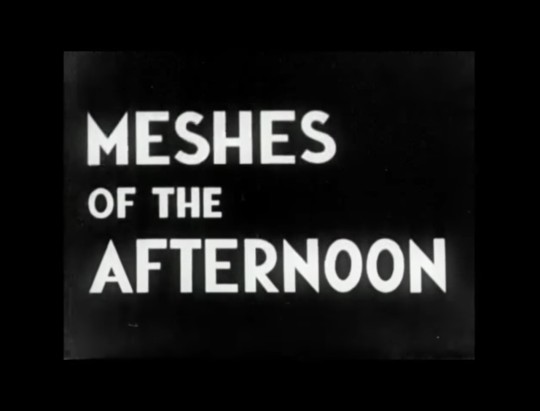


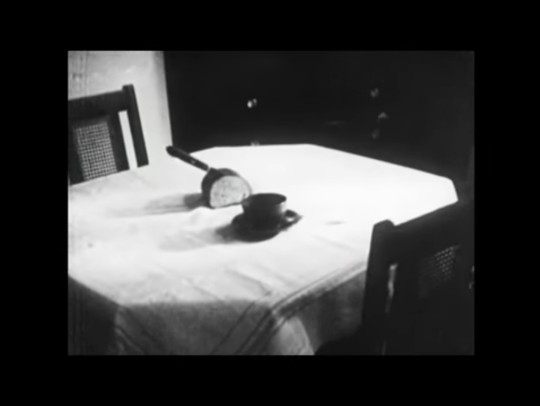

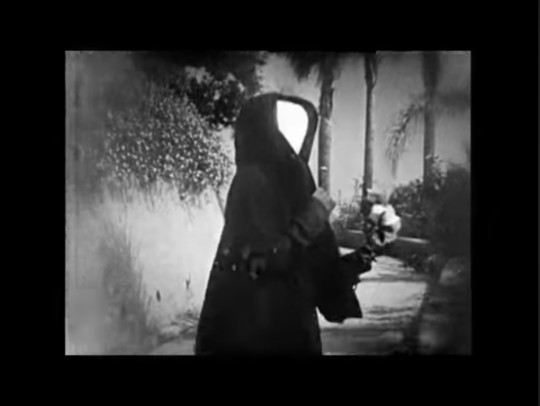
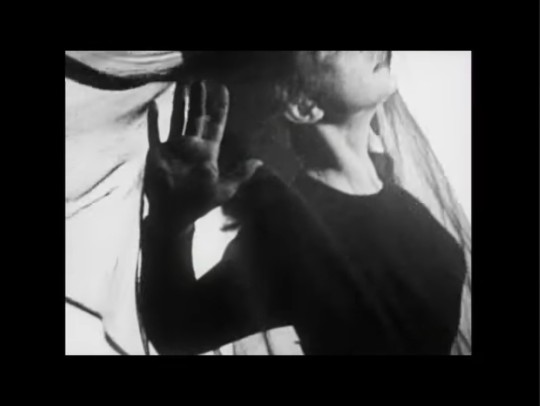
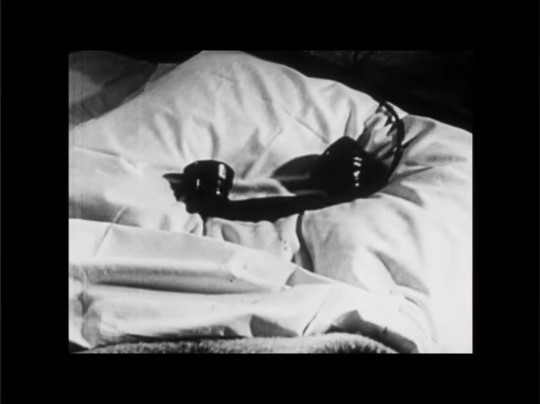


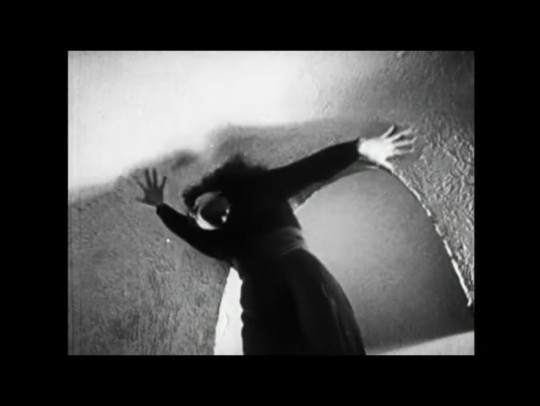

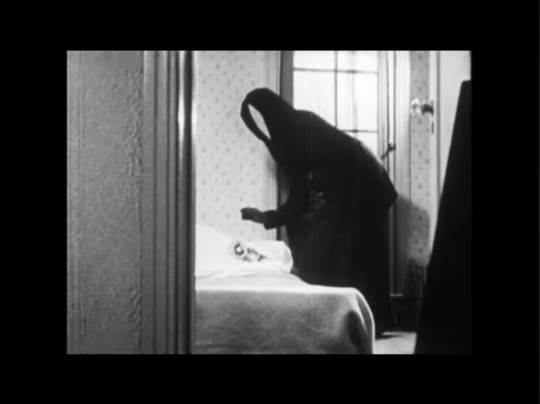
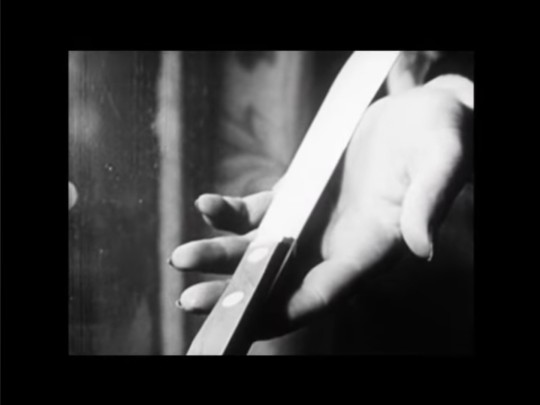
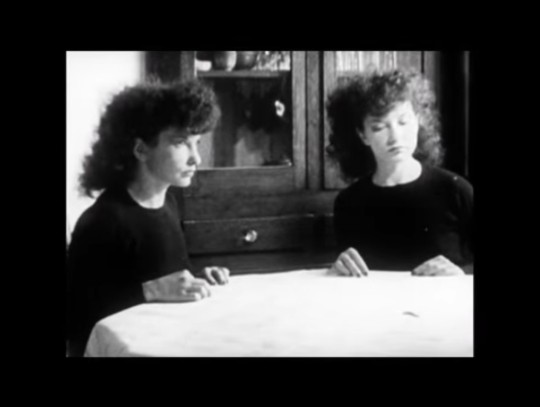
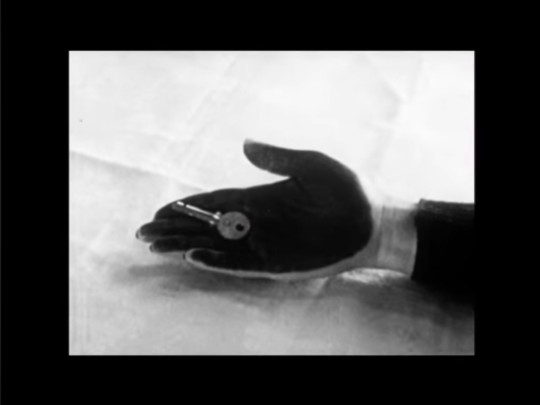
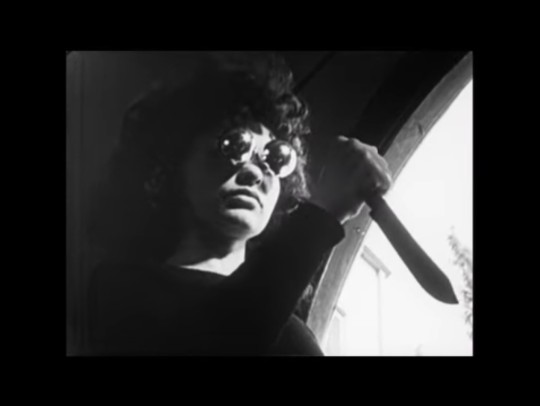

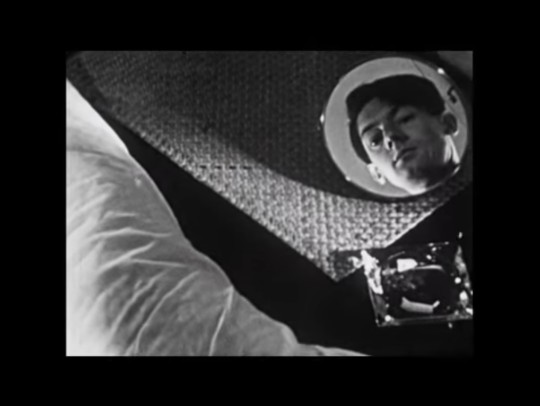
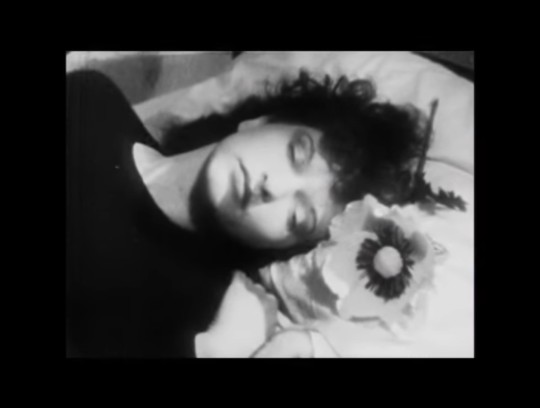

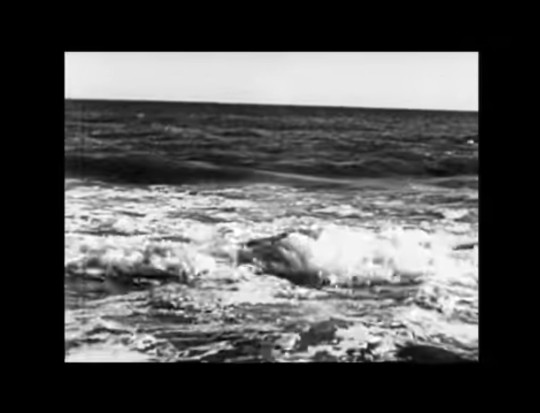
Meshes of the Afternoon
Maya Deren, 1943
#maya deren#short film#old hollywood#black and white#surreal#dream world#avant garde#cinema#surrealism#contemporary art#women filmmakers#eldrich horror#eerie#strange#dreamlike#meshes of the afternoon#classic film
202 notes
·
View notes
Text

67-Charlize Theron. POP Art de ACQUA LUNA.
En los cielos del arte hemos recorrido el vuelo del águila. Ahora, bajamos a la calle y sentimos el murmullo de lo cotidiano.
(Artistas ACQUA LUNA)
Art in heaven we have come flying eagle.Now, we drove down the street and feel the buzz of everyday life.
#charlize theron#pop art#painting#saatchi art#acqua luna#art collectors#art for sale#andy warhol#cinema#hollywood#portrait#art contemporain#art international#art america#art europe#art oceania#decoration#artists on tumblr#contemporary art#google
5 notes
·
View notes
Text


Propaganda
Vyjayanthimala (Madhumati, Amrapali, Sangam, Devdas)—Strong contender for /the/ OG queen of Indian cinema for over 2 straight decades. Her Filmfare Lifetime Achievement Award came not a moment too soon with 62 movies under her belt. Singer, dancer, actor, and also has the most expressive set of eyes known to man
Audrey Hepburn (My Fair Lady, Sabrina, Roman Holiday)—Growing up, Audrey Hepburn desperately wanting to be a professional ballerina, but she was starved during WWII and couldn't pursue her dream due to the effects of malnourishment. After she was cast in Roman Holiday, she skyrocketed to fame, and appeared in classics like My Fair Lady and Breakfast at Tiffany's. She's gorgeous, and mixes humor and class in all of her performances. After the majority of her acting career came to close, she became a UNICEF ambassador.
This is round 6 of the tournament. All other polls in this bracket can be found here. Please reblog with further support of your beloved hot sexy vintage woman.
[additional propaganda submitted under the cut.]
Vyjayanthimala:
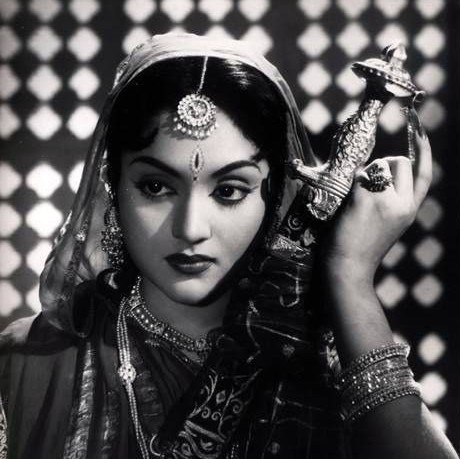
Linked gifset
Linked gifset 2
Linked gifset 3

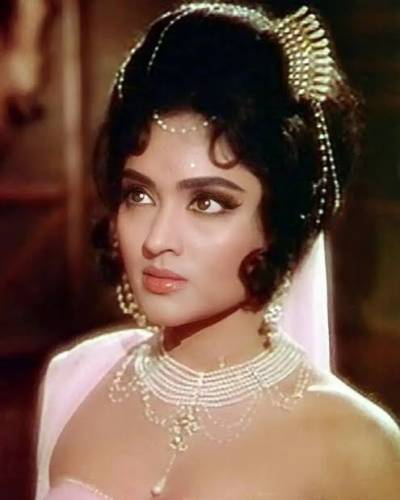
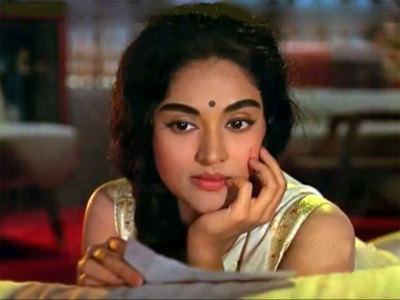
Linked gifset 4
Linked gifset 5
Linked gifset 6
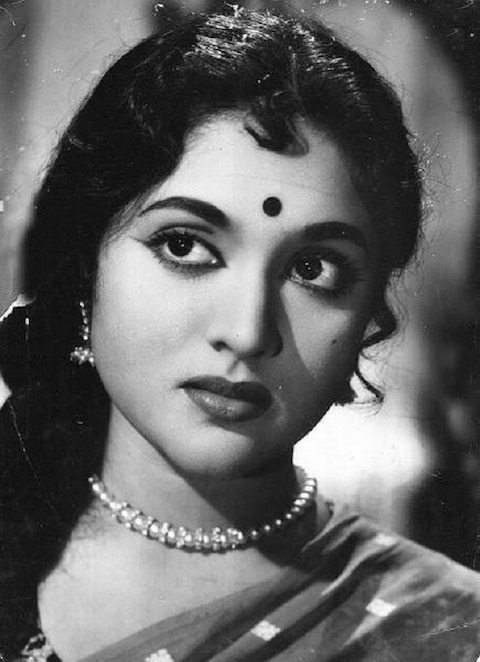
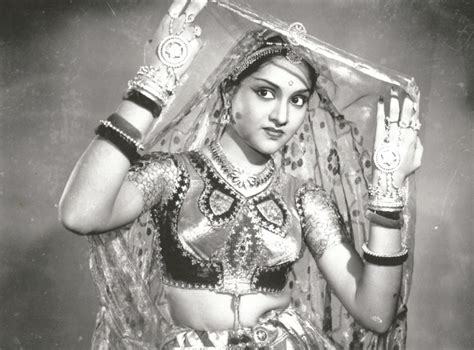
Audrey Hepburn:
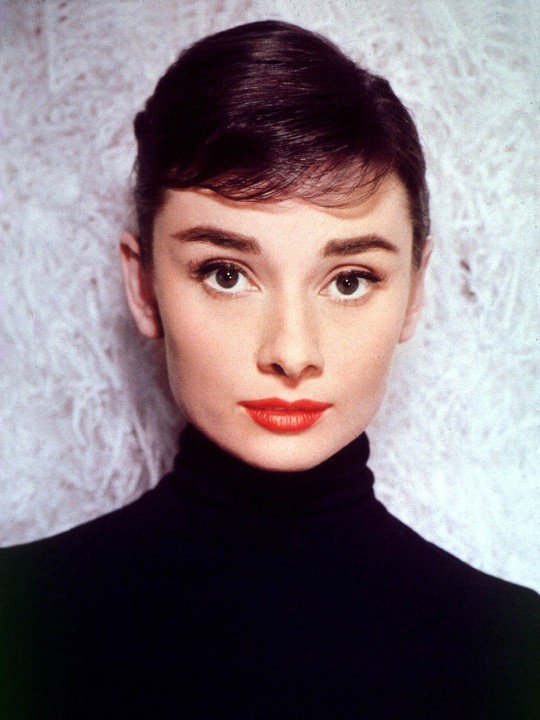
"She may be a wispy, thin little thing, but when you see that girl, you know you're really in the presence of something. In that league there's only ever been Garbo, and the other Hepburn, and maybe Bergman. It's a rare quality, but boy, do you know when you've found it." - Billy Wilder

Raised money for the resistance in nazi occupied Hungary. Became a humanitarian after retiring. Two very sexy things to do!

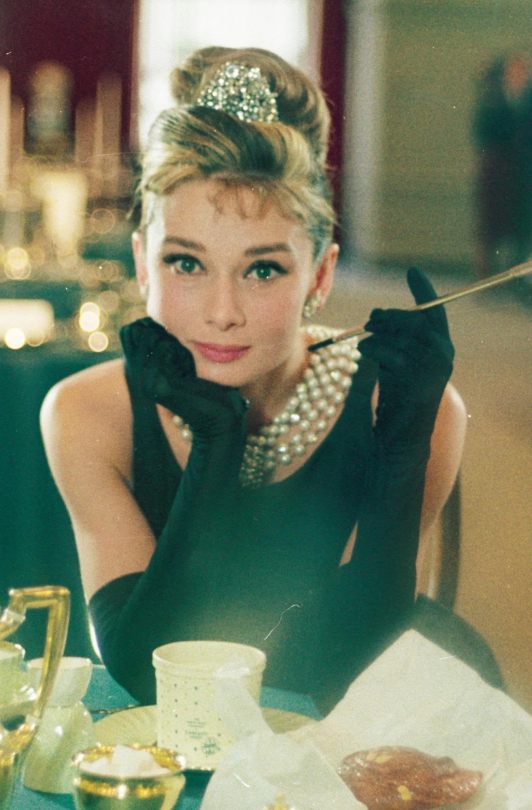
where to begin......... i wont her so bad. i literally dont know what to say.
My dude. The big doe eyes, the cheekbones, the voice. The flawless way she carried herself. She was never in a movie where she wasn't drop dead gorgeous. Oh, also the fact she raised funds against the Nazis doing BALLET and she won the Presidential Medal of Freedom for her humanitarian work.
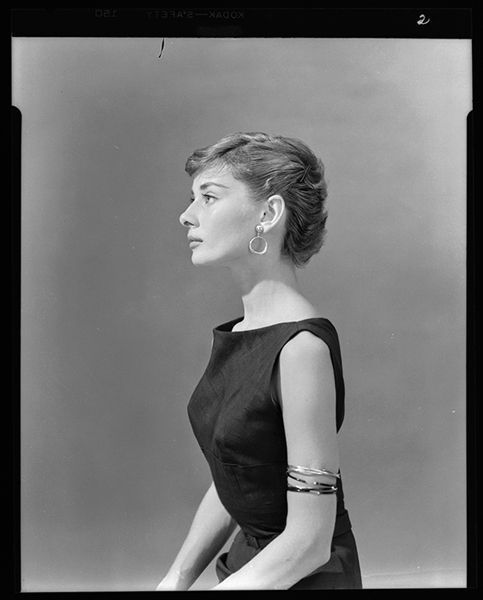
"It’s as if she dropped out of the sky into the ’50s, half wood-nymph, half princess, and then disappeared in her golden coach, wearing her glass slippers and leaving no footprints." - Molly Haskell
"All I want for Christmas is to make another movie with Audrey Hepburn." - Cary Grant
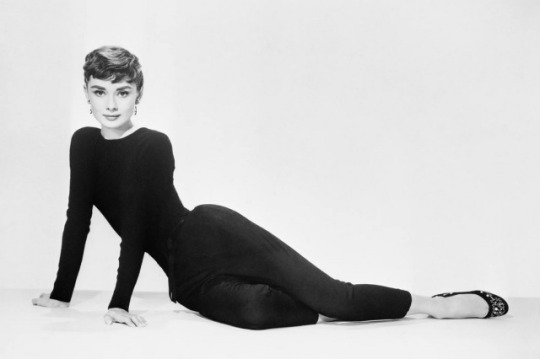
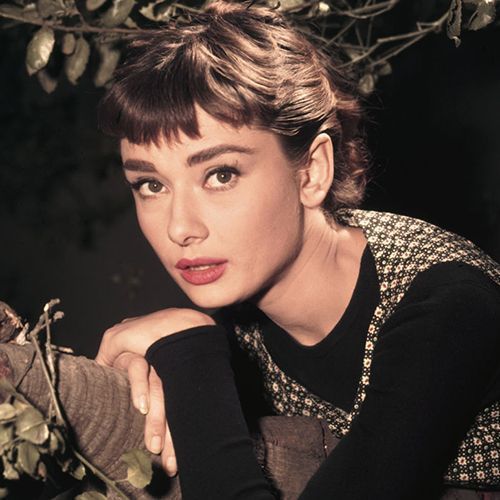
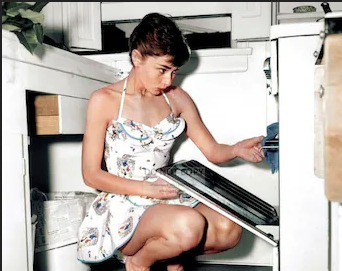
I know people nowadays are probably sick of seeing her with all the beauty and fashion merch around that depicts her and/or Marilyn Monroe but she is considered a classic Hollywood beauty for a reason. Ironically in her day she was more of the alternative beauty when compared to many of her contemporaries. She always came off with such elegance and grace, and she was so charming. Apparently she was a delight to work with considering how many of her co-stars had wonderful things to say about her. Outside of her beauty and acting ability she was immensely kind. She helped raise funds for the Dutch resistance during WWII by putting on underground dance performances as well as volunteering at hospitals and other small things to help the resistance. During her Hollywood career and later years she worked with UNICEF a lot. Just an all around beautiful person both inside and out.
youtube

No one could wear clothes in this era like she could. She was every major designer's favorite star and as such her films are time capsules of high fashion at the time. But beyond that, she had such an elegance in her screen presence that belied a broad range of ability. From a naive princess, to a confused widow, to a loving and mischievous daughter, she could play it all.
Look at that woman's neck. Don't you want to bite it?
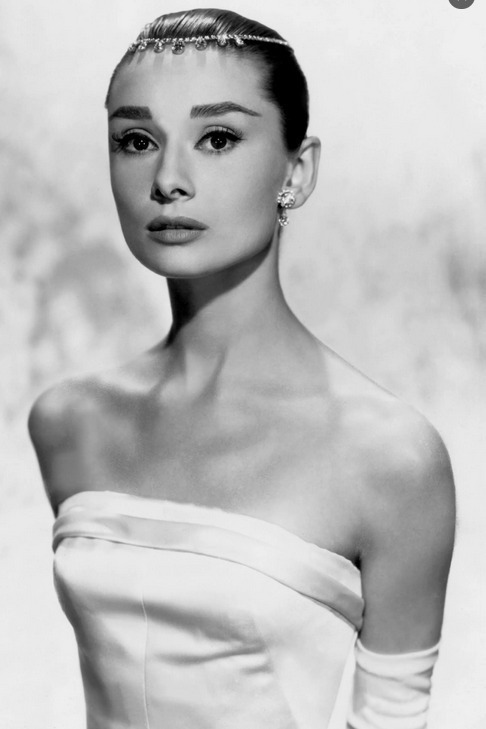
417 notes
·
View notes
Text
racism in Nintendo 2: electric boogaloo
hello and welcome back it is i, once more. to talk about the elephant in the room that has reappeared in the release of the totk designs. a suspiciously green elephant i might say
this is of course about ganon
i have made a few posts before about ganon - about how it's not anti-racist to 'redeem' his role as an all-evil villain by sexualising him; about the fan response to the first totk trailer and the rehydrated ganondorf trend; and how other characters (namely link) do not get the same treatment that ganon gets for similar design features.
what i want to give today is a more straightforward explanation of 1. why it is bad that ganon is green (yes, it is in fact bad) and 2. the orientalism inherent in his totk design. i know a lot of people find him hot, and might become defensive that i'm pointing out features that they enjoy. the fact of the matter is that the sexualisation of totk ganon is done by deliberately playing upon erotic orientalist tropes and this is something that shouldn't be ignored for personal comfort.
so to start. the green skin. im going to quote an article called Greenface: Exploring green skin in contemporary Hollywood cinema by Brady Hammond, which can be summed up by the arguement in the
"article [is] that as overtly racist cinematic depictions associated with real-world skin colors – particularly black skin – have decreased, Hollywood cinema has relocated those tropes onto green skin."
and I agree. I've talked about coding before in relation to loz, and it is no stretch to consider that a character can be representative of some particular demographic(s) without replicating their features in their entirety.
Without doubt it is straightforward to say that ganon represents a brown or black man. The gerudo are heavily inspired by the SWANA region, and not to mention that most of the gerudo indeed have a brown skin tone. botw having lighter and darker skinned gerudo is still representative of the SWANA region and the variety of looks we have there.
and thus coding done with ganon's design - intentional or otherwise - cannot escape the racial implications that ganon is very clearly a brown or black man. which means negative coding that coincides with preexisting racist coding and racial stereotypes will carry those same racist undertones. none of it is undermined by that nintendo is a Japanese company or that this is a fictional world in a video game. deliberate design choices made by real people can't be absolved from racism when it's convenient
to start:
"David Batchelor states that ‘color has been the object of extreme prejudice in Western culture’. This prejudice, he argues, manifests itself by either dismissing color outright as ‘superficial’ or by denigrating it and ‘[making it] out to be the property of some “foreign” body – usually the feminine, the oriental, the primitive, the infantile, the vulgar, the queer or the pathological’."
and
"More importantly, given the ability of the cinema screen to render fantastic spaces and colors it is necessary to consider how characters are represented when they feature an unnatural or even impossible skin color."
the gerudo have always had an orientalist lens laid over them. ganon has always had strong animalistic associations, and has appeared non-human a number of times. this was fine before nintendo retconned him to specifically be a brown man from a group that are explicitly human in the same way that hylians are human and other round-eared people in the loz franchise are human. it is racist to seperate the gerudo exclusively from other human groups as having explicitly non-human characteristics given their prolific role as the first group of brown humans in tloz, and the most foreign and exoticized group of humans.
to give ganon green skin is thusly, a way that implicitly denies his humanity. and it becomes pointed when this primitive and animalistic coding occurs most frequently to the brown man villain. now that totk revived ganon as a humaoid it becomes more pointed that he's denied the same human skintone of the rest of the gerudo, and it's quite frankly upsetting to see this happen and to be glossed over.
more specifically. green has preexisting racist associations for black and brown characters specifically. that is because green has long been used in media to depict the racialised other by linking them with real world negative racist stereotypes. an example given in the article "in Star Trek (1966-1969) when an alien woman of the Orion race dances. Her skin is an emerald green and she is both hyper-feminine and an alien Other." not commented upon but which is more evidence to the racial stereotyping of green skin is that the orion woman is depicted in a distinctly orientalist manner: with a hypersexualized outfit and routine that is reminiscent of belly dancer fantasies. the low light, setting choices, and recurring theme of the slave women dancing provocatively plays upon the western imaginations of the Harem.
as you can see:

other examples of the green other include orcs (with their own swath of racial stereotypes), the grinch, aliens, gremlins, goblins, etc. what often occurs is that green characters are concurrently linked to ethnic stereotypes through coding that is brought together in the fantasy realm by their green skin. that coding may include racism, orientalism, xenophobia, antisemitism, anti-indigenous stereotypes or so on. it is clear that ganon representing a brown/black man brings with it negative coding in the game as the only villain, his animalistic associations, his domineering violence that stands apart from the primarily female gerudo, and as the racialised other. this coding would still exist if he was not green. but it is an affront to dignity to remove the humanity of a brown man by also making him green.
if i have not yet lost you then to wrap up: the fetishizing other. as established with his coding, ganon's humanity is put into question with his design, and he can be linked to the SWANA region. evocative of a harem is the only (violent and dangerous) man from a group of women who are hidden away, and is explicitly a danger to both them and western/hylian rule and ideology.
His imagery is paired with similar design choices made for the gerudo women to sexualize him and invoke imagery of the sexy orient, the beast that can be tamed, and so on. This is done primarily with his torso being bare while he wears gold jewelry, in a way almost reminiscent of chains or cuffs. brown and black men are fetishized through sexualising them as erotic beasts, which is clear to the image that totk ganon's design presents. even the toe rings play into this - as a practice with a long history in India as worn by married women (and men, in Tamil culture).
much akin to the face veil for women, brown and black men are often sexualised through (usually gold) jewelry. specifically (like with the veil) the juxtaposition between their lack of full covering (bare torso is most common) and the abundance of ornamental jewelry. it shows their body as this exotic, decorated prize, where their nudity is highlighted by what they do wear. [this remains true despite the real world groups in the swana region that have traditionally topless outfits for men. that sort of respectful and researched depiction of cultural outfits it not what is happening here, clearly]
[note: there are clear elements of ganon's outfit that have a noticeable influence of the samurai, and the outfit is not exclusively made from one source. however the features of the outfit that i am mentioning, the jewellery, toe ring, even the trousers, are not part of the samurai aspect. it is in conjunction with the other coding and features that ganon having a bare torso becomes anything more significant]
which all goes to say that totk ganon's design continues Nintendo's legacy of racism. He is simultaneously dehumanised and sexualised - which only serves to further his dehumanisation. I am not going to ask for or address his role as a villain, what I want is just a modicum of respect.
#totk ganon#gerudo#gerudo tag#moya's loz thoughts#legend of salty#txt#if u don't know me im not open to feedback but block me and move on with your life
1K notes
·
View notes
Text

A collection of profiles, interviews, and definitive cinematic images, Cinema Her Way: Visionary Female Directors in Their Own Words by Marya E. Gates, due for publication in 2025 by Rizzoli, shines a light on female filmmakers who have made an indelible impact on the landscape of contemporary film, from art house and independent award-winners to Hollywood blockbusters and beyond.
Sign Up Here
#cinema her way#52 films by women#directed by women#female directors#women in film#book#author#film book#meryl streep#she-devil#she devil#susan seidelman
32 notes
·
View notes
Text
Cosplay the Classics: Nazimova in Salomé (1922)—Part 1
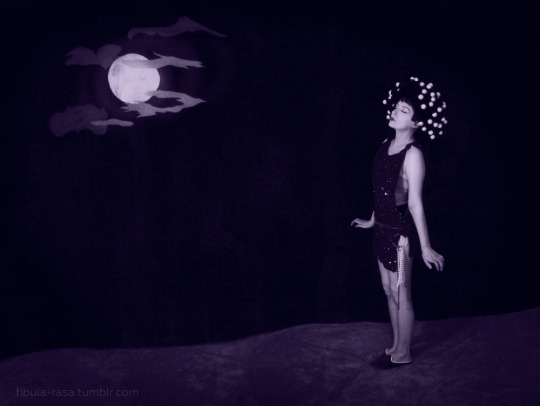
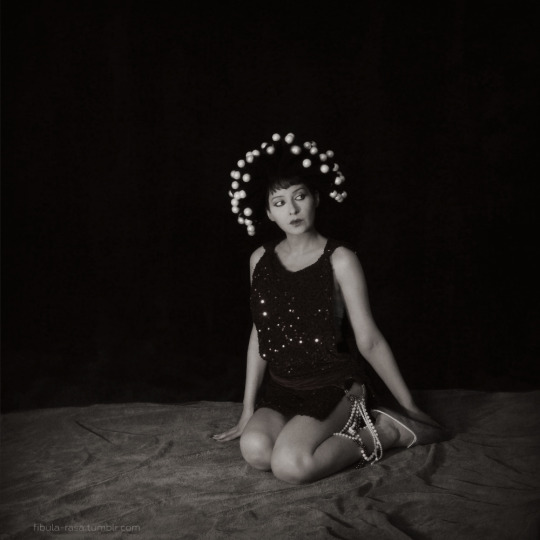
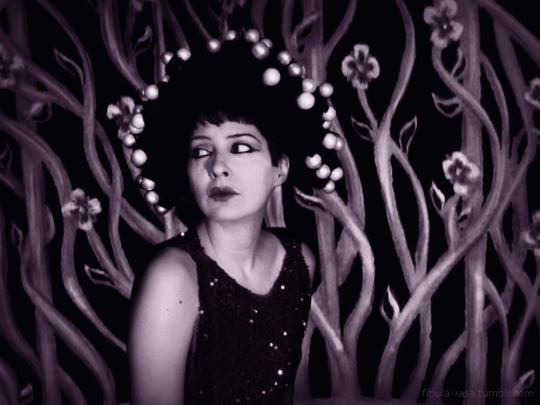
My cosplay of Nazimova as Salomé
The Importance of Being Peter: Nazimova’s Take on Wilde
With over two decades of professional acting experience behind her (six on the “shadow stage” of silent cinema), Alla Nazimova went independent. She was one of the highest paid stars in Hollywood at the start of 1922 when her contract with Metro ended. Almost exclusively using her own savings, Nazimova founded a new production company and immediately got to work on two films that reflected both a deep understanding of her own fan base and a faith in the American filmgoer’s appreciation for art.
Discourse around these films and their productions that have emerged in the century since their release are often peppered with over-simplifications or a lack of perspective. Focus is understandably placed on Salomé, as her first project, A Doll’s House (1922), has not survived. In part one of this series, I plan to contextualize Nazimova’s decision to commit Wilde’s drama to celluloid and examine the details of the adaptation. Then, in part two, I will cover how Salomé (and A Doll’s House) fits into the industry trends and the emergent studio system in the early 1920s.
While the full essay and more photos are available below the jump, you may find it easier to read (formatting-wise) on the wordpress site. Either way, I hope you enjoy the read!
Wilde’s Salomé: The Basics
Salomé was a one-act drama written by Oscar Wilde. In a creative challenge to himself, Salomé was one of Wilde’s first plays and he chose to write in French, which he did not have as complete a mastery of as of English. Wilde was directly inspired by the Flaubert story “Herodias,” which was, in turn, inspired by the short story which appears twice in the New Testament. The play was later translated into English and published with illustrations by artist Aubrey Beardsley. Wilde’s play was the basis of the opera of the same name by Richard Strauss. While both the opera and the play had been staged numerous times across Europe and in New York before Nazimova’s adaptation, Strauss’ opera was the main reference point for the story in the popular imagination of the time. The success of Strauss’ opera led to the popularization of the Dance of the Seven Veils and the accepted interpretation of the character as a classic femme fatale.
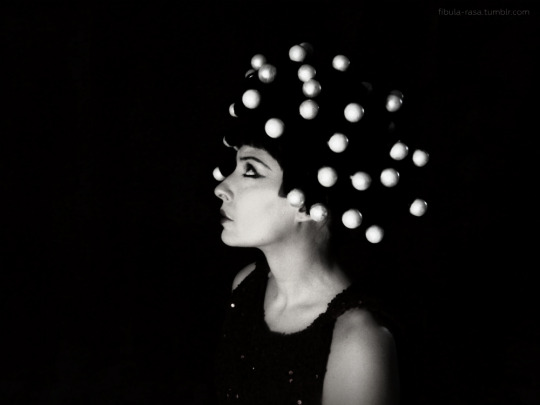
My cosplay of Nazimova as Salomé
Nazimova’s Salomé: The Basics
When Nazimova announced her production of Salomé, she did so assured that she and Natacha Rambova, her art director, had a unique and creatively compelling interpretation of the story to warrant adaptation. Nazimova was not only the star and producer of Salomé, she adapted it from its source herself under her pen name Peter M. Winters. (Cheekily, contemporary interviews and profiles joke that “Peter” is one of her common nicknames.) Charles Bryant, credited as director, was as much the director of the film as he was Nazimova’s husband, which is to say, he is not known to have contributed much at all. It’s now accepted fact that Bryant acted as a professional beard (Bryant and Nazimova were also never legally married). The choice to credit Bryant was to offset the heat Nazimova was getting in the press at the time for “taking on too much.” Having Bryant’s name in the credits was a protective measure. Charles Van Enger was a talented, up-and-coming cinematographer who had been recommended to Nazimova following the inadequate cinematography of her Metro films.
Rambova was in charge of the art direction, set designs, costumes, and makeup. Nazimova and Rambova had become close artistic collaborators after Nazimova hired Rambova to design the fantasy sequence for her film Billions (1920, presumed lost). [You can learn more about Rambova’s career here.] Both women valued their work above all else. Both were convinced that film could be art. Both had the gumption to believe that they could make a lasting mark on cinema’s recognition as a legitimate medium of artistic expression.* (Spoiler: even though Salomé was not an unqualified box-office success, they were right.)

Photo of the Salomé crew from Exhibitors Herald, 29 April 1922. Original caption: Nazimova ordered this picture taken that she might be reminded of the real pleasure encountered in every stage of the production of “Salome.” Top, left to right: Monroe Bennett, laboratory; Charles Bryant, director; Mildred Early, secretary; John DePalma, assistant director. Second row: Sam Zimbalist, cutter; Natacha Rambova, art director; Charles J. Van Enger, cameraman; the star; R. W. McFarland, manager. Front row: Neal Jack, electrician; Paul Ivano, cameraman; Lewis Wilson, cameraman.
Nazimova’s independence was at least partly spurred on by feeling creatively bereft from her work at Metro. In a 1926 interview with Adela Rogers St. Johns, Nazimova said:
“You asked me why I made ‘Salome.’ Well—’Salome’ was a purgative. […] It seems impossible now that I should ever have been asked to play such parts as ‘The Heart of a Child’ and ‘Billions.’ But I was. And instead of saying, ‘No. I will not play such trash. I will not play roles so wholely [sic] unsuited to me in every way,’ I went on and played them because of my contract, and they ruined me.
“WORSE than that, they [made] me sick with myself. So I did ‘Salome’ as a purgative. I wanted something so different, so fanciful, so artistic, that it would take the taste out of my mouth. ‘Salome’ was my protest against cheap realism. Maybe it was a mistake. But—I had to do it. It was not a mistake for me, myself.”
Given that Nazimova now had full creative freedom, outside of the confines of the Hollywood film factory, why were A Doll’s House and Salomé the first works she gravitated towards?
Initially, Nazimova had conceived of a “repertoire” concept for her productions: one shorter production (A Doll’s House) and one feature-length production (Salomé), which could be distributed and exhibited together. Once production was underway for ADH, Nazimova instead chose to make it a feature. The reasons for this decision that I found in contemporary sources are purely creative, but I don’t think it’s too much of a presumption that this may have been a financial choice, as profits from ADH (which unfortunately wouldn’t materialize—more on that in part two!) could have been cycled into Salomé’s production.
Ibsen was not popular source material for the silent screen, but Nazimova’s name and career was forever tied to the playwright as she is considered the actress who brought Ibsen to the US. (Minnie Maddern Fiske starred in a production of Hedda Gabbler in the US before Nazimova, however it failed to raise the profile of the writer.) Nazimova’s stage productions of Ibsen’s work proved that there was an audience for it in the US—both in New York and on tour. Superficially, ADH might seem like a risky proposition, but Nazimova had good reason to believe it had both artistic and box office potential. (Again, I’ll delve into why it might not have found its audience in part two.)
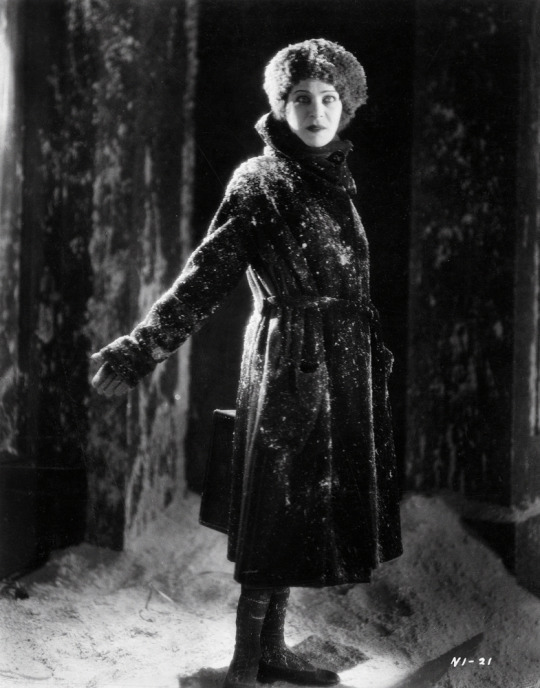
Nazimova as Nora in A Doll’s House
Though ADH is now lost, we know from surviving materials that Nazimova understood that by 1922 The New Woman archetype was already becoming passé to the post-war/post-pandemic generation of young women. Nazimova endeavored to translate the play in a way that would resonate with 1920s American womanhood. (How well she succeeded is lost to time unless we are lucky enough to recover a copy of the film.) Likewise, Nazimova approached her adaptation of Salomé with a keen eye for the concerns of modern independent women.
——— ——— ———
*Incidentally, both women also had a personal connection to Wilde. Nazimova was a close friend and colleague of Elizabeth Marbury, who worked as Wilde’s agent. Rambova spent summers at her aunt’s (Elsie de Wolfe) villa in France where she lived with her longtime partner, Marbury.
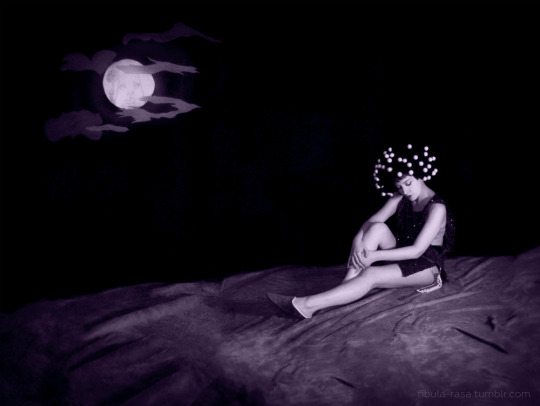
My cosplay of Nazimova as Salomé
The Adolescence of Salome
In the decade following the end of the First World War, there was a great cultural shift for women in America, who experienced and pursued greater independence in society—particularly young and/or unmarried women. This quality was emblematized in the Flappers and the Jazz Babies, but even women who didn’t participate in these subcultures lived lifestyles removed from “home and family” ideals of the past. The lifestyle change was mirrored aesthetically. As Frederick Lewis Allen describes in Only Yesterday: An Informal History of the 1920s:
“These changes in fashion—the short skirt, the boyish form, the straight, long-waisted dresses, the frank use of paint—were signs of a real change in the American feminine ideal (as well, perhaps, as in men’s idea of what was the feminine ideal). […] the quest of slenderness, the flattening of the breasts, the vogue of short skirts (even when short skirts still suggested the appearance of a little girl), the juvenile effect of the long waist,—all were signs that, consciously or unconsciously, the women of this decade worshiped not merely youth, but unripened youth […] Youth was their pattern, but not youthful innocence: the adolescent whom they imitated was a hard-boiled adolescent, who thought not in terms of romantic love, but in terms of sex, and who made herself desirable not by that sly art that conceals art, but frankly and openly.”*
Allen’s summary of youthful womanhood in the 1920s resounds so clearly in the character design and performance of Nazimova’s Salomé, it’s apparent that she and Rambova were thoroughly informed by contemporary trends around young/independent women. Belén Ruiz Garrido puts it succinctly in her great essay on the film “Besare tu boca, Iokanaan. Arte y experiencia cinematografica en Salomé de Alla Nazimova:”
“Las concomitancias con la flapper o la it girl de los felices años veinte son evidentes. Se muestra mimosa, pero su seducción es como un juego de niña. / The similarities with the flapper or the it girl of the roaring twenties are obvious. She performs affection, but her seduction is like child’s play.” (translation mine)
Nazimova was also fully conscious that her fanbase was predominantly female and that she held significant appeal for younger women. From the moment she signed her first American theatrical contract with Lee Shubert, Nazimova’s status as a queer idol was already being established.
“The women… were enthusiastic about [Nazimova]… [At the hotel, the] ladies’ entrance was always crowded with women waiting for her to return from the theatre. It is much better that she should be exclusive and meet no one if possible. They regard her as a mystery. And there are other damned good reasons besides this one.” – citation: A. H. Canby to Lee Shubert, December 29, 1908**
While women, particularly middle-class women, were emerging as a prominent consumer group in the US, Nazimova’s popularity peaked on stage and on screen. Arriving in Hollywood, Nazimova also continued her trend of surrounding herself socially and professionally with other queer women. Profiles and interviews of Nazimova in the Hollywood press often contained coded language about her queerness as a wink and nudge, usually but not always accompanied by mention of her “husband” Charles Bryant.
This well-developed understanding of her primary fanbase led her to break from popular presentations of the character as an embodiment of monstrous feminine sensuality. Instead, Nazimova chose to present the character as an adolescent. While Nazimova was the first to put this read on the character on film, Marcella Craft chose an adolescent interpretation in a production Strauss’ opera in Munich and Hedwig Reicher was a teenager when she assayed the role and played it accordingly (also in Germany). (Maybe not insignificantly, Reicher was also working in Hollywood at the time of Salomé’s production.)***
This is the American pop culture landscape we’re talking about here, so of course women’s independence was rapidly codified for capitalization. Young women were moralized at for not conforming to traditional gender roles while simultaneously being framed as sexually desirable in order to sell consumer goods (including motion pictures!). The American way. It’s hard to not see social commentary in Nazimova’s reworking of this icon of wanton femininity for a new generation.
This isn’t to suggest that Nazimova’s Salomé glorifies the character, but rather that making Salomé a teen adds layers of complexity to the production. Considering it in conversation with her predecessors, Salomé isn’t even named in the New Testament stories. Flaubert built out the character with 19th century concerns in mind (though his story is more about Herod & Herodias) and Wilde shifted even more focus to Salomé. Nazimova continued that trend with her version of Salomé—an impetuous child too young and ill-equipped to constructively deal with the horrible environment she was brought up in. (Might that resonate with a generation of young people disillusioned by a World War and a pandemic?)
As Nazimova/Peter wrote in the opening intertitles to the film:
“It is at this point that the drama opens, revealing Salome who yet remains an uncontaminated blossom in a wilderness of evil.
“Though still innocent, Salome is a true daughter of her day, heiress to its passions and its cruelties. She kills the thing she loves; she loves the thing she kills, yet in her soul there shines the glimmer of the Light and she sets forth gladly into the Unknown to solve the puzzle of her own words——”

My cosplay of Nazimova as Salomé
As Salomé was an experiment in pantomime for screen acting, it’s worthwhile to look at how Nazimova embodies this image of youth in her performance. In the first scenes, Salomé’s facial expressions are pouty and her movements like a bored child’s. Her wig emphasizes every movement she makes with a flurry of pearls and creates a neotenous silhouette for the character. When denied access to Jokanaan, her facial expressions are imperious, but the imperiousness of a spoiled child. She swings on the bars imprisoning Jokanaan as if they are a jungle gym. As she “charms” Narraboth, her expressions and body language shift toward a scheming energy with barely concealed artifice, displaying a distinct lack of sophistication—like she’s trying to angle a second serving of ice cream not exacting a favor of a servant that could cost his life.

Perhaps most crucially, Salomé’s adolescence emphasizes the inappropriateness of men’s gaze upon her. Wilde’s drama is built around rhythmic repetition in the dialogue—a key repetition being the act of looking. Though the play is only one act, some form of “regarder” in relation to Salomé is repeated nineteen times—most often in some form of “don’t look at her” or “you shouldn’t look at her that way.” As Salomé is a silent film, to repeat this in intertitles nineteen times in intertitles would be absurd. Throughout the film, frequent close ups are strategically employed to visually recreate the rhythmic emphasis on gazing. (The purpose of this device seems to have been lost on one reviewer for Exhibitors Herald who said in his review: ”too many close ups.”) Additionally, the motif is foregrounded by front-loading the mentions of looking. As soon as the opening narration ends, we’re introduced to Herod behaving lecherously toward Salomé and Herodias telling him not to look at her. The perversity of Herod is amplified here because Salomé is not only his niece and his step-daughter, but also a child. This scene is followed by Narraboth and the page having a similar interaction, albeit with a different tone.
As Nazimova put it herself in a profile in Close-Up magazine:
“The men about her are obnoxious; they cannot even look upon her decently. She loathes them all. Even the Syrian [Narraboth] whose approach is of all the most respectful and decorous, is of his times and his love is tempered with the alloy of lust.”
In the film, Salomé’s rage against Herod is justified, and her rage against Jokanaan is a raw confusion of emotions—she doesn’t have the capacity to act constructively. When the first unfortunate man commits suicide over her, she barely takes notice, establishing Salome’s blasé attitude toward death. When the second man takes his life this time directly in front of her, Salomé only notices after almost tripping on his body. Her response is giving the body an annoyed kick for tripping her! The key phrase of the drama is “The mystery of love is greater than the mystery of death.” Salomé is surrounded by death, enveloped by it, but love (of any kind) is unknown to her until Jokanaan. So, when her love of Jokanaan is rebuked, she reverts to the only response that has been nurtured into her: death.
Nazimova’s Salomé is a perfect surviving example of a quality of her acting described in an uncredited review of Nazimova’s theatrical work:
“If the actress you’re seeing knows what she’s saying but you don’t, it’s Mrs. [Minnie Maddern] Fiske. But if the actress doesn’t know what she is saying and you do, it’s Alla Nazimova.”****
We as viewers understand what Salomé is going through, but she is being psychologically buffeted by fate and circumstance without ever comprehending the nature of it. The tumultuous feelings brought on by Salomé’s first brush with the spiritual (rather than the sexual), launches her into an accelerated ripening of her cruelty. This is masterfully communicated by Nazimova through facial expression and body language and accentuated by Rambova’s costuming.

As Herman Weinberg put it in his essay “The Function of the Actor:”
“The true film crystalizes action for us. ‘To see eternity in a grain of sand,’ the poet said. ‘To see a life cycle in an hour and a half’ is the modern screen parallel.”
Because of the emotional scale of Nazimova’s performance in Salomé, it has been variously described as “bizarre” or “grotesque”—though not always said derogatorily. That’s on point, as Nazimova’s performance is only one expression of her protest against realism in the film.
——— ——— ———
*If you’re interested in the 1920s at all, I highly recommend Allen’s book. The section this quote is from has a detailed survey of changes in American women’s lifestyles throughout the 1920s.
**as quoted in “Alla Nazimova: ‘The Witch of Makeup’” by Robert A. Schanke
***Gavin Lambert’s biography of Nazimova intimates that she referenced the 1917 Tairov production of Wilde’s Salomé, which she reportedly had a detailed description of. Reading about the production for myself in Mark Slonim’s Russian Theatre: from the Empire to the Soviets, I’m not sure what precisely she would have drawn from this production. It doesn’t seem to have much in common with the ‘22 film at all. That said, in a 1923 interview with Malcolm H. Oettinger in Picture-Play Magazine, Nazimova admits that in preparing for the film, she compiled a large scrapbook of previous productions and artistic interpretations of the story and character. Unfortunately, though Lambert clearly did voluminous research for his biography, his presentation and interpretation leaves a lot to be desired. Most of the things I tried to verify or try to find more information on from the book proved to be misrepresentations or were factually incorrect. So, I’m avoiding quoting Lambert without verification, unless what I’m citing is directly taken from a primary source; like a quote from Nazimova’s correspondence.
****quotation is from an uncredited clipping held by the Nazimova archive in Columbus, Georgia as quoted in Gavin Lambert’s biography
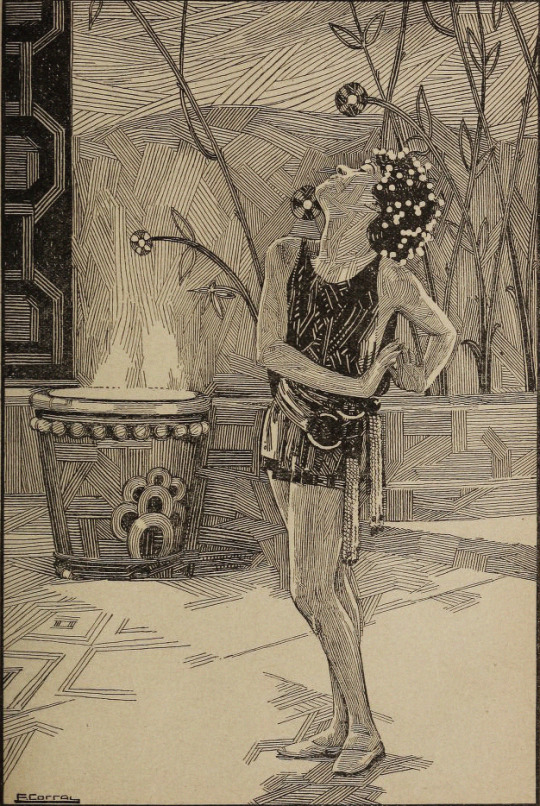
Illustration of Nazimova as Salomé by F. Corral from The Story World, March 1923
Nazimova and Rambova’s Modernist Phantasy
The assurance that Rambova and Nazimova felt that they had something new to bring to Salomé was obviously not solely founded in a character interpretation updated for the screen and for the decade. The two crafted a singular work born of pastiche in a manner that genuinely had not been done before in the American film industry. It’s often repeated that Salomé is America’s first art film. This may have its origin in promotional materials* made for the initial release of the film. Before the film’s official release, Bryant, Nazimova, and Paul Ivano (assistant camera & Nazimova’s on-again-off-again lover) arranged preview screenings and a few reviews from those screenings mention in some form that Salomé was a direct retort to the notion that art cannot be made with a camera.
What constituted the Nazimova/Rambova strategy to elevate film to the status of art? Both women had around six years of experience working in film (twelve collectively), but both came from a live performance background—theatrical acting and ballet respectively. Salomé is a film based on a stage play (though not strictly based on any one production of that play). Salomé inherits its symbology (first and foremost the moon) from its source material, but the filmmakers found creative ways of communicating and remixing symbols for the camera. The art design is inspired by Aubrey Beardsley’s illustrations for a printed edition of the play, though Rambova pulled more broadly from art-nouveau to devise designs that are in no way unoriginal.
As for the much discussed Dance of the Seven Veils, in my opinion, Nazimova’s execution is inspired by the dance described in Flaubert’s “Herodias” rather than a previous live performance.
“Again the dancer paused; then, like a flash, she threw herself upon the palms of her hands, while her feet rose straight up into the air. In this bizarre pose she moved about upon the floor like a gigantic beetle; then stood motionless.
“The nape of her neck formed a right angle with her vertebrae. The full silken skirts of pale hues that enveloped her limbs when she stood erect, now fell to her shoulders and surrounded her face like a rainbow. Her lips were tinted a deep crimson, her arched eyebrows were black as jet, her glowing eyes had an almost terrible radiance; and the tiny drops of perspiration on her forehead looked like dew upon white marble.”
Clearly, I’m not implying that what’s described above is exactly what we see on screen. My thought instead is that Nazimova may have drawn inspiration for the dance to be provocative in an uncanny way instead of provocative in a conventionally sensuous way. What we do see on screen is a distinct lack of practiced sensuality and an element of menace. The former comes both from Salomé’s youthfulness and from the logic that, as Salomé has already gotten Herod to give her his word in front of dignitaries, there’s no need for seduction. The latter is brought on by the expression of Salomé’s fractured emotional state and feelings about Herod. In execution, the use of close-ups again serves a major purpose. Intercutting close-up reactions from those gathered at the court provides a crescendo to the motif of looking, which is then pivotally reversed in the kiss scene. Cutting to close-ups of Salomé’s face accents the ecstatic and maniacal quality of the dance. Together this variation of shots creates an effect that could only work on film.


Salomé has a significant appreciation for its non-cinematic antecedents, but filtered through the prism of Nazimova’s and Rambova’s own creative strengths and sensibilities—a melding of theater and graphic art into something not only fresh but also totally cinematic.
It speaks to their filmmaking skill that all of these ideas and influences do in fact come together as a cohesive yet wholly unconventional film. Some critics of Salomé (both contemporary and modern) will cite vague notions of theatricality, or state that the film is only a series of tableaux, or that the limited sets don’t depart enough from a stage presentation. Art is in the eye of the beholder, but I think whether those specific elements preclude Salomé from being cinematic is a matter of perspective.
The oversized, stylized nature of Salomé’ssets might at first register as theatrical, but those same sets also serve to amp up the anti-real nature of the film. It’s uncharitable to Rambova to suggest that this artificiality was not a conscious artistic decision. If you have seen the sequences she designed with Mitchell Leisen for De Mille’s Forbidden Fruit (1921) then you have seen her demonstrated understanding of how designs register on camera. The gorgeously executed lighting effects in Salomé that are employed to to sublimate tone shifts could feasibly be recreated in a theatrical setting, here, filtered through the camera of Van Enger, register as thoroughly cinematic.

To once again quote “The Function of the Actor” by Weinberg:
“In nine movies out of ten (most particularly those emanating from the film factories of Hollywood), the actors stand around and talk to each other, relieved only by periodic bursts of someone going in or out of a doorway. (Sixty percent of the action in the average Hollywood movie consists of people going in and out of doors.) […]
“The actor going through a doorway may be a necessary device on the stage, to get him on and off. But Pudovkin has made a neat distinction between the realities of stage and screen: ‘The film assembles the elements of reality to build from them a new reality proper to itself; and the laws of time and space that, in sets and footage of the stage are fixed and fast, are in the film entirely altered.’ On the stage, that is, an event seems to occur in the same length of time it would occupy in life. On the screen, however, the camera records only the significant parts of the event, and so the filmic time is shorter than the real time of the event.”
Weinberg cites Pudovkin in an amusing but illustrative way here. People may throw “overly theatrical” or “stagey” casually, but more often than not the distinction between theatrical/cinematic comes down to how space and time is traversed. Even if the base material, a narrative drama for example, is shared between stage and screen, there should be a thoughtful construction of geography and chronology. Could Salomé have played more creatively with space? Perhaps. But, for a film made in early 1922, its creative geography isn’t all that uninventive. The majority of the action in Salomé takes place exclusively on one set, so it does rely a lot on the types of comings and goings that Weinberg identifies with theatre. That said, there are some comings and goings that forcefully pull the audience away from the feeling of stagey-ness. The most consequential occurs in the scene with the first suicide, which I previously mentioned in the context of developing Salomé‘s character and environment. The man runs to the ledge of the courtyard, beholds the moon, and leaps. Cut to a wide, back-lit shot of the figure plunging to nowhere, establishing that the city above the clouds depicted in the art titles and opening credits is the actual physical location that film is taking place in. It’s a genuinely startling moment in the film and Salomé’s most evocative use of creative geography.
The majority of legitimate critical appraisal at the time of Salomé’s release recognize it as an achievement in film art, even highlighting artsiness as a potential selling point. As art cinemas started popping up in the US, Salomé stayed in circulation. Appreciation grew. Legends emerged around its production. And, now one hundred years later, it’s safe to say that Salomé has earned and kept its place as a fixture of the history of film art. As we are lucky enough to have the complete film to watch, assess, reassess, and debate its qualities as a work of cinematic art, I’m positive that conversation on Salomé will continue.
So, if Salomé was appreciated in its time, why did it ruin and bankrupt Nazimova? What was going on in the American film industry at the time? Find out in part two!
“If we have made something fine, something lasting, it is enough. The commercial end of it does not interest me at all. I hate it. This I do know: we must live, and I must live well. I have suffered—enough. Never again shall I suffer. But most of all am I concerned in creating something that will lift us all above this petty level of earthly things. My work is my god. I want to build what I know is fine, what I feel calling for expression. I must be true to my ideals—”
— Nazimova on Salomé quoted in “The Complete Artiste” by Malcolm Oettinger
——— ——— ———
*As of the time of writing, I haven’t been able to track down a complete copy for the campaign book for the film, so I’m relying on fragments, quotes, and second-hand references to its content.
——— ——— ———
Read Part Two Here
——— ——— ———
☕Appreciate my work? Buy me a coffee! ☕
——— ——— ———
Bibliography/Further Reading
(This isn’t an exhaustive list, but covers what’s most relevant to the essay above!)
Salomé by Oscar Wilde [French/English]
“Herodias” by Gustave Flaubert [English]
Cosplay the Classics: Natacha Rambova
Lost, but Not Forgotten: A Doll’s House (1922)
“Temperament? Certainly, says Nazimova” by Adela Rogers St. Johns in Photoplay, October 1926
“Newspaper Opinions” in The Film Daily, 3 January 1923
“Splendid Production Values But No Kick in Nazimova’s “Salome” in The Film Daily, 7 January 1923
“SALOME” in The Story World, March 1923
“SALOME’ —Class AA” from Screen Opinions, 15 February 1923
“The Complete Artiste” by Malcolm H. Oettinger in Picture-Play Magazine, April 1923
“Famous Salomes” by Willard H. Wright in Motion Picture Classic, October 1922
“Nazimova’s ‘Salome’” by Walter Anthony in Closeup, 5 January 1923
“Alla Nazimova: ‘The Witch of Makeup’” by Robert A. Schanke in Passing Performances: Queer Readings of Leading Players in American Theater History
“Besare tu boca, Iokanaan. Arte y experiencia cinematografica en Salome de Alla Nazimova” by Belén Ruiz Garrido (Wish I had read this at the beginning of my research and writing instead of near the end as it touches upon a few of the same points as my essay! Highly recommended!)
“The Function of the Actor” by Herman Weinberg
“‘Out Salomeing Salome’: Dance, The New Woman, and Fan Magazine Orientalism” by Gaylyn Studlar in Visions of the East: Orientalism in Film
Nazimova: A Biography by Gavin Lambert (Note: I do not recommend this without caveat even though it’s the only monograph biography of Nazimova. Lambert did a commendable amount of research but his presentation of that research is ruined by misrepresentations, factual errors, and a general tendency to make unfounded assumptions about Nazimova’s motivations and personal feelings.)
Only Yesterday: An Informal History of the 1920s by Frederick Lewis Allen
Russian Theatre: from the Empire to the Soviets by Mark Slonim
#1920s#1922#1923#Nazimova#alla nazimova#natacha rambova#cosplay#fan art#Salome#Oscar Wilde#film history#independent film#silent cinema#classic cinema#film#american film#queer cinema#women filmmakers#queer#cosplay the classics#queer film#cinema#women directors#classic film#classic movies#silent film#my gifs#silent movies#silent era#history
33 notes
·
View notes
Text
Submission: About the house facade falling
About that reference to a silent movie with house facade falling - hello silent movie fan here! :)
You are thinking of the iconic scene from "Steamboat Bill jr", a film by and with Buster Keaton! (Who happens to be a cousin of mine, so double interest jippie!)

This is one of his most famous scenes. The house facade was weighing about 2 tons, so no cardboard here - he could have been killed if the calculations hadn't worked out and the crew on set was worried about Buster's safety. This is even more amazing when you think about Buster's education or lack thereof - his parents were Vaudevillian actors and Buster grew up "on tour" and acting from early childhood on. Meaning he never got a formal education. He famously had difficulties writing his own name. Buster couldn't really read or write but created these elaborated sets and stunts himself.
Buster talked about that if he hadn't been born into an entertainment business family, he would have become an engineer. The film industry was quite literally build with his technical input on film technology (he took cameras apart and rebuild them, to make them more adaptable to his ideas for example) and stunt work on set.
All of this to say - the falling facade is iconic in so many ways! And I hope Taylor saw "Steamboat Bill jr". :)
Copyright has run out and Library of Congress has put it on the National Film Registry. So it is easily possible to watch this online.
I don't know if I'm being a bit too informed but I want to add this too - maybe Taylor not only wanted to reference (maybe) this iconic scene, but also the circumstances?
You see Buster was one of THE creators of cinema. Even back then people acknowledged that. But he was always bad with, or rather not interested in, money!
Unlike Charlie Chaplin and Harold Lloyd, his two big contemporaries, he decided to sign with a big studio. Thinking that way he didn't have to do the paper work (he couldn't read anyway) and accounting and the studio could do the promo work he wasn't really interested in.
That deal turned to be his downfall! He got screwed over with the contract. The studio thought he was dumb and uneducated and treated him terribly. Buster suddenly had to hand in written scripts - how? The studio was getting more and more involved with production because he couldn't give them written pages ... it was a disaster!
At that time his marriage to a famous actress also started to fall apart and Buster started drinking. By the time of "Steamboat Bill jr" he was a full blown alcoholic. His last wife, he met after he had sobered up, Eleanor, later talked about that everyone around Buster back then thought, he was trying to kill himself with this stunt (which was filmed at the end of the movie shoot) because he was so desperate and depressed at that point. He couldn't deal with his marriage falling apart and the studio trying to micromanage him.
So yeah ... I don't know. Did Taylor reference this? She knows about Clara Bow, the star no one was interested in when she started speaking ... does she know about Buster and his conflict with the film industry which sucked him dry and discarded him? Possible ...
If you want to know more about Buster - there is a very good documentary "Buster Keaton - a hard act to follow". He is also featured in the "Silent Hollywood" documentary series. All his films are amazing, but his personal favourite was "The General". I think that is the one Buster would recommend to you. ;)
————
Anonymous said:
So after the volcano 🌋 anon she Buster Keaton’s through the door and comes out under the floor.
24 notes
·
View notes
Text



Ava Gardner & Le Galion: L’ASTRE – Ava, Incendiary Star
The year 2022 marks the centenary of the birth of an icon of Hollywood cinema: Ava Gardner. Archetype of the femme fatale, personification of luscious femininity, the great actress was close to the house of Le Galion at the end of the 1950s.
She met Paul Vacher and became an ambassador for Sortilège, before asking him to compose a tailor-made fragrance for her. The perfumer, close to many stars of the time (Marilyn Monroe, Judy Garland, Grace Kelly…) complied.
In 2022, Le Galion is launching L'Astre, a contemporary rewrite of a formula that has remained private for decades. Worked in collaboration with the heirs of Ava Gardner who offer access to their archives, L'Astre symbolizes the brilliance of these two great names of the 20th century, whose influence continues today
Created by Rodrigo Florès-Roux, this new version of L’Astre is, according to the perfumer, a “large, exuberant and magnetic floral.” After a catchphrase made of sensual spices, the perfumer worked on “a spectacular floral accord” made of white flowers, before continuing with an amber, warm and enveloping background.
52 notes
·
View notes
Text
youtube
Wow, I so loved this video and found it to be so comforting! Tab Hunter seems like he was a really sweet, sensitive guy who made a great life for himself despite a ton of misfortune, rejection, and homophobia in Hollywood. It's rare for a story of a queer actor's life from this era to have such a happy ending.
It's seriously impressive that after years of studio suppression he was able to openly embrace queer cinema by working with John Waters and the come out for himself, too. Lots of his contemporaries took their secrets to their graves, but in the interviews featured Tab seems so open and joyful, and at peace at where he was in his old age.
48 notes
·
View notes
Text
Fünf von der Jazzband (1932)
I'd like to thank the anonymous person who sent me the question about this film tonight, because I was finally inspired to sit down and watch the whole thing! I'm glad, too, because it's very funny. 😁

True, I am not a German speaker and I didn't have the benefit of subtitles, but I was surprised at how much of the dialogue I did understand. Good heavens, maybe I learned something. Or maybe the plot of this bubbly musical comedy is simple enough even for dopes like me, I dunno. It starts when a young lady of no musical talent accidentally joins up with a jazz quartet after she falls butt-first off a ladder and into the bass drum. Things only escalate from there with a series of comedic misunderstandings, including getting wrongfully mixed up with a gang of car thieves:

oh yeah and Peter Lorre is here, briefly
I checked, and Peter doesn't appear in the film for almost a full hour!! It's not that I wasn't enjoying the story without him, I absolutely was, but in the back of my mind I kept wondering when on earth he was going to show up. Normally, if he's not in a prominent role, the patented Lorre appearance occurs no later than the first half hour or so. Here it's little more than a glorified cameo at a point when the story is nearly over. I mean, he doesn't have a whole lot to do anyway.
This actually gave me something of a revelation as I was watching. It has been speculated by modern critics and even some of Peter's contemporaries, like Brecht or Lang, that had the war never occurred and Peter was never forced to flee Germany, his career would have blossomed beyond his wildest imaginings and he would have been even more renowned in the most prestigious works of film and stage, oh why did Hollywood have to corrupt his genius, etc. etc.
And yet. What exactly did German cinema offer him? It seems to me that the execs at Ufa had just as little imagination when it came to finding something suitable to his talents. In the wake of his success in M, Lorre turned down role after role of crazed psycho killer and retreated into things like this, into lighthearted musical comedy only remembered by us giant nerds film enthusiasts. Sure, he loved doing comedy. However these movies, however fun and enjoyable, are treated today as forgettable footnotes in film history, barely a ripple in the cinematic pond. Is that somehow better? If not for the war, would we instead speak of Lorre today as an amusing but ultimately obscure character actor of German film and TV, a familiar face once but not recognized by anyone under a certain age? Would he never haunt the imagination of creators today, the ones who never knew his name but still understand, as if by base instinct, the meaning of his voice and face?
We have no way of knowing. Perhaps this was not all that Germany could have offered him, had the war never happened. But to me, these films only look like a different sort of cage--perhaps even smaller than the one Hollywood prepared for him.
16 notes
·
View notes
Text
Anyway here's my reading list for my big film censorship project in case anyone's been wondering what I've been up to when I'm not being a stupid idiot cringey fandom blogger or whatever the jackasses think I am:
Vaudeville, Old and New: An Encyclopedia of Variety Performers in America, by Frank Cullen
Vaudeville and the Making of Modern Entertainment, 1890-1925, by David Monod
From Traveling Show to Vaudeville: Theatrical Spectacle in America, 1830-1910, edited by Robert M. Lewis
American Vaudeville as Ritual, by Albert F. McLean Jr.
American Vaudeville As Seen by its Contemporaries, edited by Charles W. Stein
Rank Ladies: Gender and Cultural Hierarchy in American Vaudeville, by M. Alison Kibler
The New Humor in the Progressive Era: Americanization and the Vaudeville Comedian, by Rick DesRochers
Humor and Ethnic Stereotypes in Vaudeville and Burlesque, by Lawrence E. Mintz
"Vaudeville Indians" on Global Circuits, 1880s-1930s, by Christine Bold
The Original Blues: The Emergence of the blues in African American Vaudeville, by Lynn Abbott and Doug Seroff
Waltzing in the Dark: African American Vaudeville and Race Politics in the Swing Era, by Brenda Dixon Gottschild
The Wizard of Menlo Park: How Thomas Alva Edison Invented the Modern World, by Randall Stross
Edison, by Edmund Morris
The Rise and Place of the Motion Picture, by Terry Ramsaye
The Romantic History of the Motion Picture: A Story of Facts More Fascinating than Fiction, by Terry Ramsaye (Photoplay Magazine)
Before the Nickelodeon: Edwin S. Porter and the Edison Manufacturing Company, by Charles Musser
The Kinetoscope: A British History, by Richard Brown, Barry Anthony, and Michael Harvey
The Man Who Made Movies: W.K.L. Dickson, by Paul Spehr
A Million and One Nights: A History of the Motion Picture, by Terry Ramsaye
Emergence of Cinema: The American Screen to 1907, by Charles Musser
Dancing for the Kinetograph: The Lakota Ghost Dance and the Silence of Early Cinema, by Michael Gaudio
The First Screen Kiss and "The Cry of Censorship," by Ralph S.J. Dengler
Archival Rediscovery and the Production of History: Solving the Mystery of Something Good - Negro Kiss (1898), by Allyson Nadia Field
Prizefighting and the Birth of Movie Censorship, by Barak Y. Orbach
A History of Sports Highlights: Replayed Plays from Edison to ESPN, by Raymond Gamache
A History of the Boxing Film, 1894-1915: Social Control and Social Reform in the Progressive Era, by Dan Streible
Fight Pictures: A History of Boxing and Early Cinema, by Dan Streible
The Boxing Film: A Cultural and Transmedia History, by Travis Vogan
Policing Sexuality: the Mann Act and the Making of the FBI, by Jessica R. Pliley
Screened Out: Playing Gay in Hollywood, from Edison to Stonewall, by Richard Barrios
The Ashgate Research Companion to Moral Panics, edited by Charles Krinsky
A Companion to Early Cinema, edited by Andre Gaudreault, Nicolas Dulac, and Santiago Hidalgo
The Silent Cinema Reader, edited by Lee Grieveson and Peter Kramer
The Harlot's Progress: Myth and Reality in European and American Film, 1900-1934, by Leslie Fishbein
Oscar Micheaux and His Circle: African-American Filmmaking and Race Cinema of the Silent Era, by Pearl Bowser, Jane Gaines, and Charles Musser
Banned in Kansas: Motion Picture Censorship, 1915-1966, by Gerald R. Butters, Jr.
Black and White and Blue: Adult Cinema From the Victorian Age to the VCR
Complicated Women: Sex and Power in Pre-Code Hollywood, by Mick Lasalle
Dangerous Men: Pre-Code Hollywood and the Birth of the Modern Man, by Mick Lasalle
Pre-Code Hollywood: Sex, Immorality, and Insurrection in American Cinema, 1930-1934, by Thomas Doherty
Forbidden Hollywood: The Pre-Code Era (1930-1934), When Sin Ruled the Movies, by Mark A. Vieira
Sin in Soft Focus: Pre-Code Hollywood, by Mark A. Vieira
Hollywood's Censor: Joseph I. Breen & the Production Code Administration, by Thomas Doherty
The Dame in the Kimono: Hollywood, Censorship, and the Production Code, by Leonard J. Leff and Jerold L. Simmons
Moral House-Cleaning in Hollywood: What's it All About? An Open Letter to Mr. Will Hays, by James R. Quirk (Photoplay Magazine)
Will H. Hays - A Real Leader: A Word Portrait of the Man Selected to Head the Motion Picture Industry, by Meredith Nicholson (Photoplay Magazine)
Ignorance: An Obnoxiously Moral morality Play, Suggested by "Experience," by Agnes Smith (Photoplay Magazine)
Close-Ups: Editorial Expression and Timely Comment (Photoplay Magazine)
Children, Cinema & Censorship: From Dracula to the Dead End Kids, by Sarah J. Smith
Freedom of the Screen: Legal Challenges to State Film Censorship, 1915-1981, by Laura Wittern-Keller
Picturing Indians: Native Americans in Film, 1941-1960, by Liza Black
America on Film: Representing Race, Class, Gender and Sexuality at the Movies, by Harry M. Benshoff and Sean Griffin
White: Essays on Race and culture, by Richard Dyer
Black American Cinema, edited by Manthia Diawara
Colorization: One Hundred Years of Black Films in a White World, by Wil Haygood
Hollywood's Indian: the Portrayal of the Native American in Film, edited by Peter C. Rollins and John E. O'Connor
Wiping the War Paint Off the Lens: Native American Film and Video, by Beverly R. Singer
Celluloid Indians: Native Americans and Film, by Jacquelyn Kilpatrick
Native Americans on Film: Conversations, Teaching, and Theory, edited by M. Elise Marubbio and Eric L. Buffalohead
Framing Blackness: The African American Image in Film, by Ed Guerrero
Toms, Coons, Mulattoes, Mammies, & Bucks: An Interpretive History of Blacks in American Films, by Donald Bogle
Hollywood Black: the Stars, the Films, the Filmmakers, by Donald Bogle
White Screens, Black Images: Hollywood From the Dark Side, by James Snead
Latino Images in Film: Stereotypes, Subversion, and Resistance, by Charles Ramirez Berg
Reel Inequality: Hollywood Actors and Racism, by Nancy Wang Yuen
Visions of the East: Orientalism in Film, edited by Matthew Bernstein and Gaylyn Studlar
The Hollywood Jim Crow: the Racial Politics of the Movie Industry, by Maryann Erigha
America's Film Legacy: The Authoritative Guide to the Landmark Movies in the National Film Registry, by Daniel Eagan
Movie-Made America: A Cultural History of American Movies, by Robert Sklar
Of Kisses and Ellipses: The Long Adolescence of American Movies, by Linda Williams
Banned in the Media: A Reference Guide to Censorship in the Press, Motion Pictures, Broadcasting, and the Internet, by Herbert N. Foerstel
Censoring Hollywood: Sex and Violence in Film and on the Cutting Room Floor, by Aubrey Malone
Hollywood v. Hard Core: How the Struggle Over Censorship Saved the Modern Film Industry, by Jon Lewis
Not in Front of the Children: "Indecency," Censorship, and the Innocence of Youth, by Marjorie Heins
Degradation: What the History of Obscenity Tells Us About Hate Speech, by Kevin W. Saunders
Censoring Sex: A Historical Journey Through American Media, by John E. Semonche
Dirty Words & Filthy Pictures: Film and the First Amendment, by Jeremy Geltzer
Flaming Classics: Queering the Film Canon, by Alexander Doty
Masculine Interests: Homoerotics in Hollywood Film, by Robert Lang
Monsters in the Closet: Homosexuality and the Horror Film, by Harry M. Benshoff
New Queer Cinema: A Critical Reader, edited by Michele Aaron
New Queer Cinema: The Director's Cut, by B. Ruby Rich
Now You See It: Studies on Lesbian and Gay Film, by Richard Dyer
Gays & Film, edited by Richard Dyer
Screening the Sexes: Homosexuality in the Movies, by Parker Tyler
Out in Culture: Gay, Lesbian, and Queer Essays on Popular Culture, edited by Corey K. Creekmur and Alexander Doty
Out Takes: Essays on Queer Theory and Film, edited by Ellis Hanson
Queer Images: a History of Gay and Lesbian Film in America, by Harry M. Benshoff and Sean Griffin
The Lavender Screen: the Gay and Lesbian Films, Their Stars, Makers, Characters, & Critics, by Boze Hadleigh
The Celluloid Closet: Homosexuality in the Movies, by Vito Russo
Tinker Belles and Evil Queens: the Walt Disney Company From the Inside Out, by Sean Griffin
The Encyclopedia of Censorship, by Jonathon Green
56 notes
·
View notes
Text
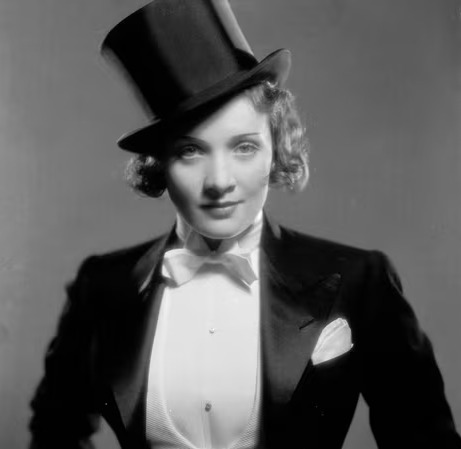
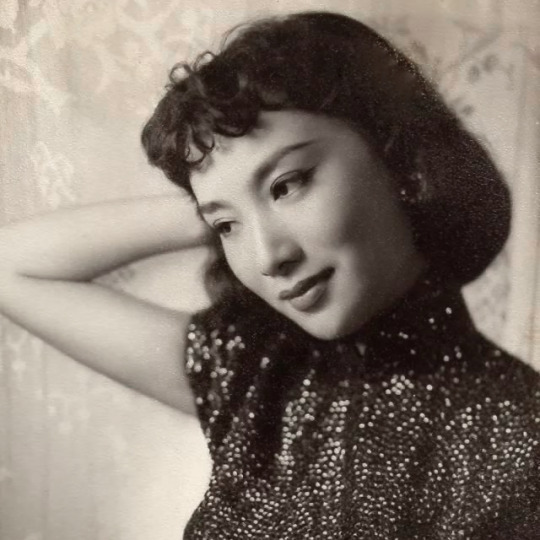
Propaganda
Marlene Dietrich (Shanghai Express, Witness for the Prosecution, Morocco)—Bisexual icon, super hot when dressed both masculine and feminine, lived up her life in the queer Berlin scene of the 1920s, central to the 'sewing circle' of the secret sapphic actresses of Old Hollywood, refused lucrative offers by the Nazis and helped Jews and others under persecution to escape Nazi Germany, the love of my life
Xia Meng, also known as Hsia Moog or Miranda Yang (Sunrise, Bride Hunter)—For those who are familiar with Hong Kong's early cinema, Xia Meng is THE leading woman of an era, the earliest "silver-screen goddess", "The Great Beauty" and "Audrey Hepburn of the East". Xia Meng starred in 38 films in her 17-year career, and famously had rarely any flops, from her first film at the age of 18 to her last at the age of 35. She was a rare all-round actress in Mandarin-language films, acting, singing, and dancing with an enchanting ease in films of diverse genres, from contemporary drama to period operas. She was regarded as the "crown princess" among the "Three Princesses of the Great Wall", the iconic leading stars of the Great Wall Movie Enterprises, which was Hong Kong's leading left-wing studio in the 1950s-60s. At the time, Hong Kong cinema had only just taken off, but Xia Meng's influence had already spread out to China, Singapore, etc. Overseas Chinese-language magazines and newspapers often featured her on their covers. The famous HK wuxia novelist Jin Yong had such a huge crush on her that he made up a whole fake identity as a nobody-screenwriter to join the Great Wall studio just so he can write scripts for her. He famously said, "No one has really seen how beautiful Xi Shi (one of the renowned Four Beauties of ancient China) is, I think she should be just like Xia Meng to live up to her name." In 1980, she returned to the HK film industry by forming the Bluebird Movie Enterprises. As a producer with a heart for the community, she wanted to make a film on the Vietnam War and the many Vietnam War refugees migrating to Hong Kong. She approached director Ann Hui and produced the debut film Boat People (1982), a globally successful movie and landmark feature for Hong Kong New Wave, which won several awards including the best picture and best director in the second Hong Kong Film Award. Years later, Ann Hui looked back on her collaboration with Xia Meng, "I'm very grateful to her for allowing me to make what is probably the best film I've ever made in my life."
This is round 5 of the tournament. All other polls in this bracket can be found here. Please reblog with further support of your beloved hot sexy vintage woman.
[additional propaganda submitted under the cut.]
Xia Meng:

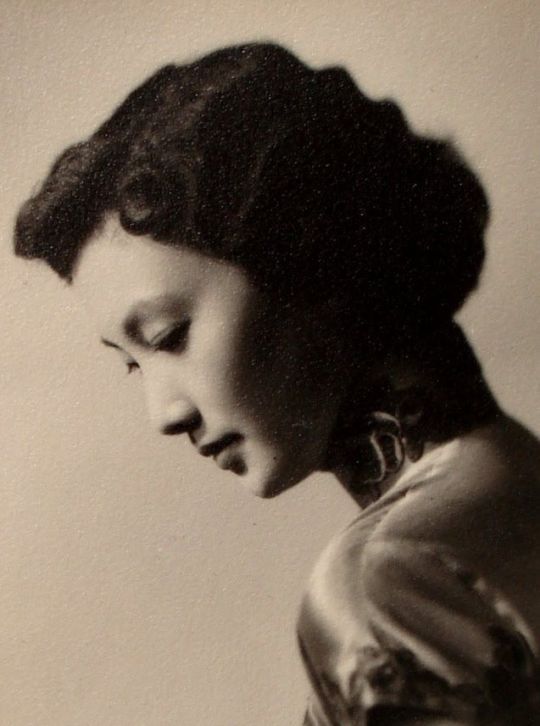
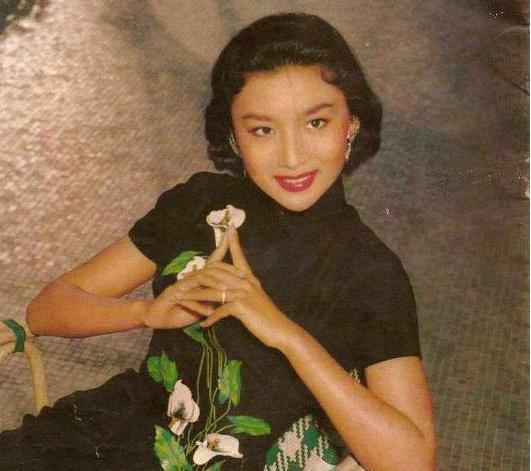
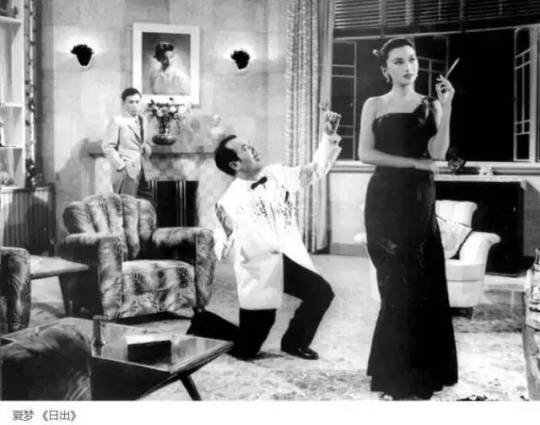

Marlene Dietrich:
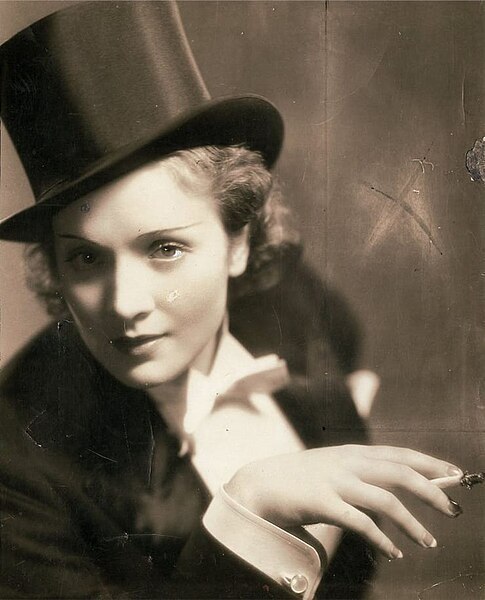
ms dietrich....ms dietrich pls.....sit on my face
its marlene dietrich!!!! queer legend, easily the hottest person to ever wear a tuxedo, that hot hot voice, those glamorous glamorous movies…. most famously she starred in a string of movies directed by josef von sternberg throughout the 1930s, beginning with the blue angel which catapulted her to stardom in the role of the cabaret singer lola lola. known for his exquisite eye for lighting, texture, imagery, von sternberg devoted himself over the course of their collaborations to acquiring exceptional skill at photographing dietrich herself in particular, a worthy direction in which to expend effort im sure we can all agree. she collaborated with many other great directors of the era as well, including rouben mamoulian (song of songs), frank borzage (desire), ernst lubitsch (angel), fritz lang (rancho notorious), and billy wilder (witness for the prosecution). the encyclopedia britannica entry im looking at while compiling this propaganda describes her as having an “aura of sophistication and languid sexuality” which✔️💯. born marie magdalene dietrich, she combined her first and middle names to coin the moniker “marlene”. she was a trendsetter in her incorporation of trousers, suits, and menswear into her wardrobe and her androgynous allure was often remarked upon. critic kenneth tynan wrote, “She has sex, but no particular gender. She has the bearing of a man; the characters she plays love power and wear trousers. Her masculinity appeals to women and her sexuality to men.” in the 1920s she enjoyed the vibrant queer nightlife of weimar berlin, visiting gay bars and drag balls, and in hollywood her love affairs with men and women were an open secret. she was an ardent opponent of nazi germany, refusing lucrative contacts offered her to make films there, raising money with billy wilder to help jews and dissidents escape, and undertaking extensive USO tours to entertain soldiers with an act that included her a playing musical saw and doing a mindreading routine she learned from orson welles. starting in the 50s and continuing into the mid-70s she worked largely as a cabaret artist touring the world to large audiences, employing burt bacharach as her musical arranger.
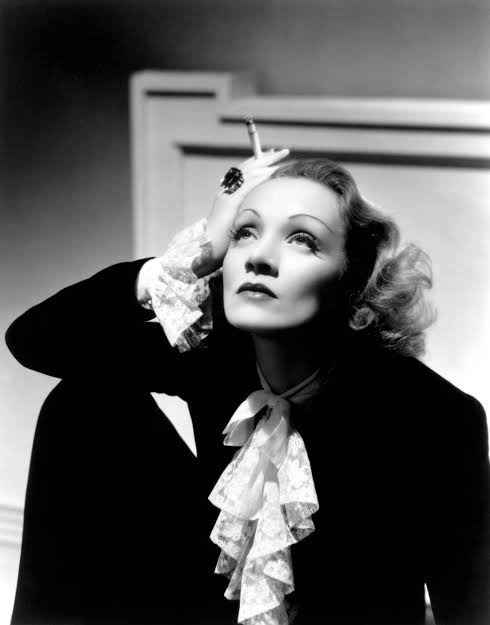
First of all, there are those publicity photos of her in a tux. Second of all, I have never been the same since knowing that she sent copies of those photos to her Berlin lovers signed "Daddy Marlene." Not only is she hot in all circumstances, but she can do everything from earthy to ice queen. Also, she kept getting sexy romantic lead parts in Hollywood after the age of 40, which would be rare even now. She hated Nazis, loved her friends, and had a sapphic social circle in Hollywood. She also had cheekbones that could cut glass and a voice that could melt you.

Her GENDER her looks her voice her everything
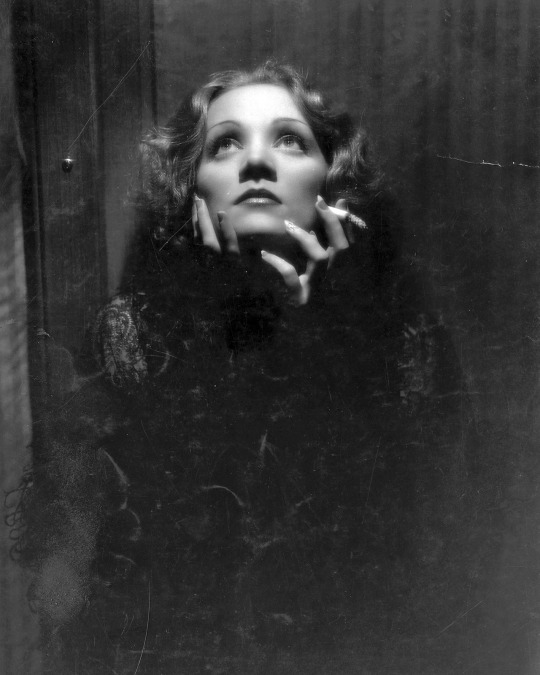
“In her films and record-breaking cabaret performances, Miss Dietrich artfully projected cool sophistication, self-mockery and infinite experience. Her sexuality was audacious, her wit was insolent and her manner was ageless. With a world-weary charm and a diaphanous gown showing off her celebrated legs, she was the quintessential cabaret entertainer of Weimar-era Germany.”

The bar scene in Morocco awoke something in me and ultimately changed my gender
youtube
"Her manner, the critic Kenneth Tynan wrote, was that of ‘a serpentine lasso whereby her voice casually winds itself around our most vulnerable fantasies.’ Her friend Maurice Chevalier said: ‘Dietrich is something that never existed before and may never exist again.’”
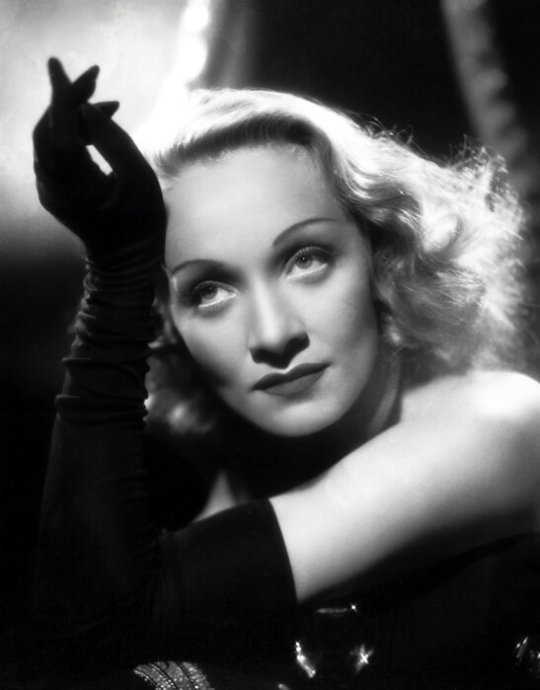
"Songstress, photographer, fashion icon, out bisexual phenom (notoriously stole Lupe Velez and Joan Crawford's men, and Errol Flynn's wife, had a torrid affair with Greta Garbo that ended in a 60-year feud, other notable conquests including Erich Maria Remarque -yes, the guy who wrote All Quiet on the Western Front- Douglas Fairbanks Junior, Claudette Colbert, Mercedes de Acosta, Edith Piaf), anti-Nazi activist. Marlene was a bitch - she had an open marriage for decades and one of her favorite things was making catty commentary about her current lover with her husband, and her relationship with her daughter was painful- but she was also immensely talented, a hard worker, an opponent of fascism and the hottest ice queen in Hollywood for a long time."
youtube
"She can sing! She can act! She told the Nazis to fuck off and became a US citizen out of spite! She worked with other German exiles to create a fund to help Jews and German dissidents escape (she donated an entire movie salary, about $450k, to the cause). She looks REALLY GOOD in a suit. If you're not convinced, please listen to her sing "Lili Marlene". Absolutely gorgeous woman with a gorgeous voice."
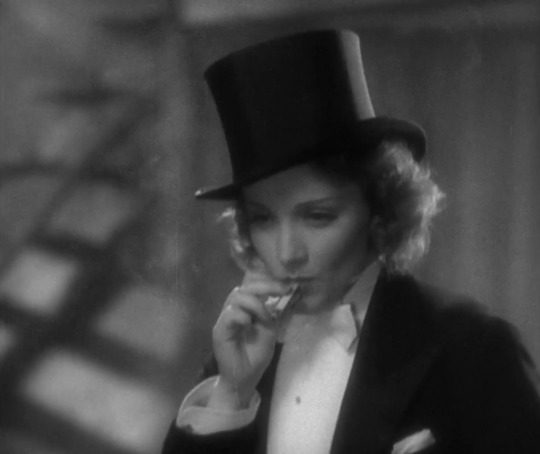
Gifset link
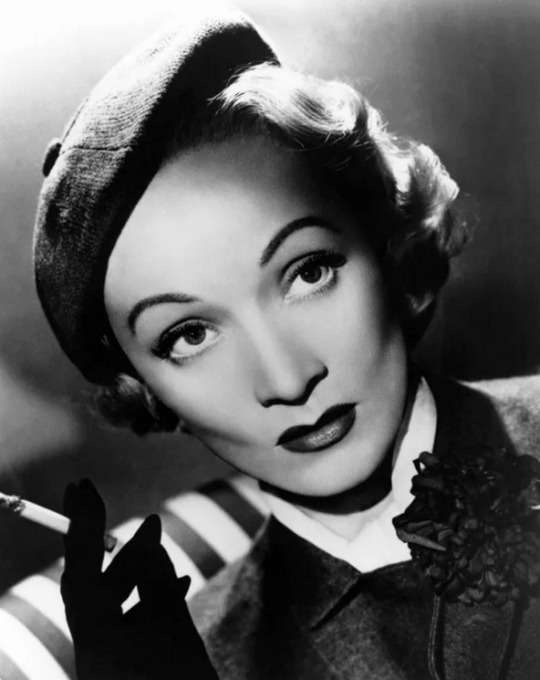
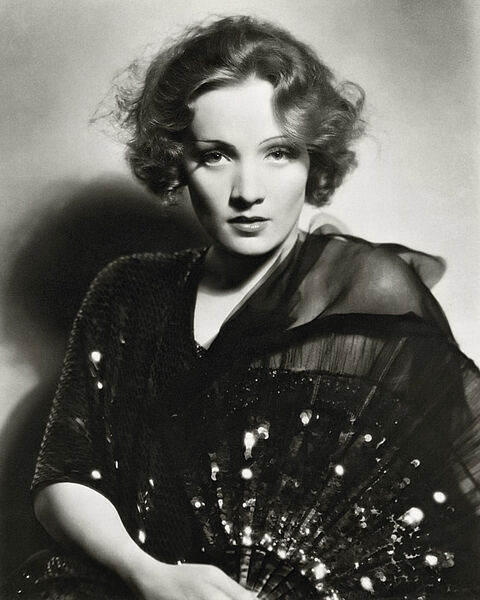

"Bisexual icon and Nazi-hater. Looks absolutely stunning in the suits she liked to wear. 'I dress for the image. Not for myself, not for the public, not for fashion, not for men'."
"would you not let her walk on you?"
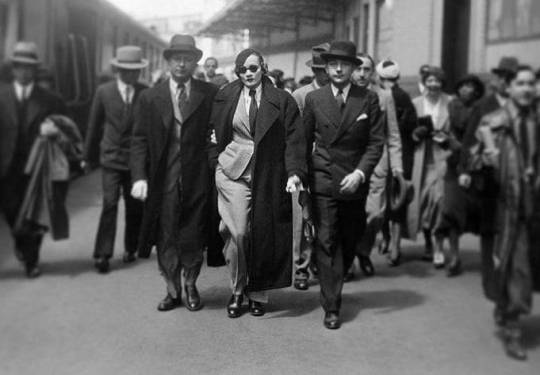
266 notes
·
View notes
Text
Cillian Murphy is one of the most beloved actors in contemporary cinema. After starring in indie favourites 28 Days Later and Intermission in the early 2000s, Murphy secured his place in Hollywood by forging a long-standing relationship with director Christopher Nolan. The two worked together on Batman Begins and have since collaborated on five more films, most recently, Oppenheimer.
While he was breaking America, Murphy also honed his acting reputation closer to home as Tommy Shelby in Peaky Blinders. But before he became one of the most recognisable and respected names in film, Murphy very nearly pursued a music career.
In his youth, Murphy was particularly passionate about music. The budding actor was in a band with his brother named The Sons of Mr. Green Genes, who even received an offer to do five albums with Acid Jazz Records. They declined the offer, but Murphy’s love for music persisted and he still enjoys engaging with music. He even told the Sunday Independent Life Magazine that the only extravagances in his lifestyle are his “stereo system, buying music and going to gigs”.
His love of music has also bled into his professional life. Between shooting with Nolan and collecting Bafta nominations for his work on Peaky Blinders, Murphy has presented a show on the beloved alternative radio station, BBC Radio 6. He once told the BBC, “One of my favourite things in the world is playing music on my favourite radio station in the world”.
As well as providing Murphy with an outlet for his love of music, the show has also given fans insight into his music taste, which is both wide-spanning and characteristically Radio 6. During his time with the BBC, he shared his love for a number of artists and tracks, including fellow Irishmen Fontaines D.C., stating, “There is a great explosion of new Irish music… Every single tune, they’re relentlessly themselves”.
He once shouted out Radiohead’s ‘Daydreaming’, stating, “When Radiohead released ‘Daydreaming’, I listened to it five times in a row. I think it’s a remarkable piece of music”. He’s also given nods to Low, Elbow, and Kendrick Lamar, who he notes is a favourite of his son’s.
Throughout his appearances on the radio station, Murphy has played over 400 songs ranging from trip-hoppers Massive Attack to indie folk favourites Big Thief to jazz composer Alice Coltrane. The show acted as a platform for Murphy’s expansive music taste and a great place to pick up recommendations for Murphy fans and casual radio listeners alike...'
#Cillian Murphy#Radiohead#“Daydreaming”#Low#Elbow#Kendrick Lamar#Big Thief#Alice Coltrane#Massive Attack#28 Days Later#Intermission#Christopher Nolan#Batman Begins#Oppenheimer#The Sons of Mr. Green Genes#Tommy Shelby#Peaky Blinders#BBC Radio 6#Fontaines D.C.
26 notes
·
View notes
Note
14 and 26??
thank you very much for the ask from the i'm not from the states ask game, anon!
14. do you enjoy your country’s cinema and/or tv?
26. does your nationality get portrayed in hollywood/american media? what do you think about the portrayal?
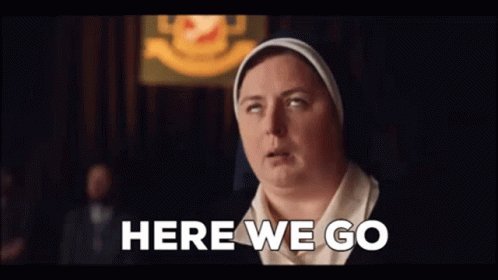
now - i think these two have to be taken together...
so, yes, i do enjoy our media - we have obviously produced the finest comedy television show in recent history, after all.
but i do think that media made in ireland - or, at least, made in ireland in english - suffers from the fact that it's aiming to be marketable outside of ireland. and - in particular - that it's aiming to be marketable in both britain and the united states.
which means that it takes an interest in portraying an image of irishness which is appealing to those countries.
when it comes to the states, the way we are portrayed and the way we portray ourselves is always aiming to tap into a view of ireland which dominates the american national consciousness - as a country which americans, especially on the east coast, consider themselves enormously culturally aligned to and politically sympathetic with, due to the sheer size of the irish-american community.
let's get the cards on the table - being irish-american is a meaningful cultural identity within the united states. it is not - and it never, ever will be - the same as actually being irish [which someone ought to tell the president...]. and one reason is because the centrality of emigration to the irish-american identity requires ireland to become a quasi-mystical place, preserved in aspic at the point mass emigration to the states really took off.
that's why you end up with the portrayal of ireland you see in films like the banshees of inisherin - quaint, rural, full of half-wit musical drunkards who love a wee chat, surrounded by historical events but also sort of outside them...
in britain, the geographical proximity, the easier movement across boarders, and the fact that these enable diaspora communities to retain closer links with ireland [one of the single most amusing activities in the world is watching irish-americans learn that vast numbers of brits have more recent irish heritage than they do...] means that ireland is treated less like a magical fantasy land unchanged from ages past.
but it's nonetheless affected by the brits' own stereotypical view of the country - that the rural south is full of superstitious, unsophisticated idiots [who sometimes get to have hearts of gold!] who've never seen pesto; that the urban south is generally indistinguishable from london; and that the north is full of grey housing estates interspersed with burned-out cars and everyone is a terrorist.
again and again it seems that the only way to get funding for a project about ireland is to pick one of the famine, the war of independence, or the troubles as your setting. there's so little representation of what ireland looks like in the here-and-now - not least in the fact that you'd get the impression from its international film and television that it's a country where everyone is white...
and even media which is set in contemporary ireland and which does make an effort to be more diverse - such as the tv adaptation of normal people - presents an ireland designed for international consumption [trinity college dublin does run itself very much like oxford and cambridge in real life - but this is turned up to eleven in normal people in a way which is clearly aimed at the british audience...].
which is something i'd like to see us get a grip on, tbh.
12 notes
·
View notes
Text
Westworld at 50: Michael Crichton’s AI dystopia was ahead of its time
by Keith McDonald, Senior Lecturer Film Studies and Media at York St John University

Westworld turned 50 on November 21. Director Michael Crichton’s cautionary tale showed that high-concept feature films could act as a vehicle for social commentary. Westworld blended cinematic genres, taking into account the audience’s existing knowledge of well-worn narrative conventions and playfully subverting them as the fantasy turns to nightmare.
The film centres on a theme park where visitors, in this case the protagonists Peter (Richard Benjamin) and John (James Brolin), can enter a simulated fantasy world – Pompeii, Medieval Europe, or the Old West. Once there, they can live out their wildest fantasies. They can even have sex with the synthetic playthings that populate the worlds.
This sinister idea went on to be explored further in later films such as The Stepford Wives (1975 & 2004), A.I. Artificial Intelligence (2001) and Ex Machina (2014).
youtube
Of course, it all goes terribly wrong when a computer virus overruns the park and the androids become unbound from the safety protocols that have been encoded into them. The resultant horror climaxes with Peter being stalked through the park by the menacing gunslinger (Yul Brynner).
The film isn’t perfect. Westworld was Michael Crichton’s feature directorial debut, and it shows – as does the tight shooting schedule and frugal budget imposed by MGM. The studio was notorious at the time for mishandling projects and their directors.
Compared to some of the other notable films released that year, such as William Friedkin’s masterful The Exorcist, Nicolas Roeg’s terrifying Don’t Look Now and Clint Eastwood’s assured High Plains Drifter, Westworld has a B-movie aesthetic.
This is, though, elevated by a towering performance from Brynner, and the high-concept approach that later came to dominate the Hollywood system. The film also provided fruitful inspiration for an ambitious HBO adaptation in 2016.
Genre blending and bending
Westworld successfully blended science fiction with other genres. In this sense, it was a pioneering film, which made the most of its limitations due to the hugely influential imagination of Crichton and a postmodern masterstroke of the casting and performance of Brynner.
Today’s cinema is saturated with meta-textual references – moments when a film makes a critical commentary on itself or another movie. This was typified by Michael Keaton’s recent reprisal of his role as Batman in The Flash. But when Westworld was released, such creative choices were novel and fresh.
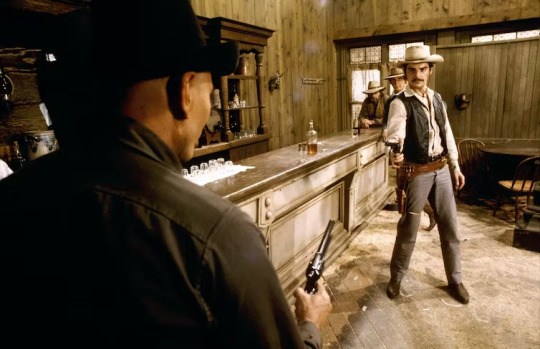
Bynner’s android gunslinger wears a costume almost identical to the one he donned for his role in The Magnificent Seven (1961). The choice adds dramatically to the thematic concerns of the film – the saturation of consumer culture and the postmodern bent towards repetition, simulation and cliche.
The simulated scenes in the theme park itself are built around cliched movie moments. The three settings which high-paying customers can enter represent film genres: The Medieval simulation, the “swords and sandals” recreation of the Roman Empire and the titular western.
When Westworld was released, each of these genres (the Medieval history, the Roman epic and the western) were already past their heyday, both in terms of popularity and reliability at the box office. Using them furthered the film’s comment on contemporary Hollywood – that it had run out of original ideas and was simply cashing in on nostalgia.
youtube
Westworld and AI
Though other films, like Stanley Kubrick’s 2001: A Space Odyssey (1968), were exploring the concept of nascent AI around this time, Westworld arguably did so in the most accessible style. And its legacy in doing so is clear in subsequent films, such as The Terminator (1984), The Matrix (1999) and recently in M3GAN (2023).
Crichton later revisited the notion of a theme park turning perilous due to the Promethean human instinct in his novel, Jurassic Park in 1990. Steven Spielberg’s adaptation remains one of the high points in American action-adventure cinema.
The fascinating scenarios Michael Crichton explored in his work successfully embodied the societal anxieties and technophobia of the 1970s. And in Westworld, he demonstrated a flair for capturing such fears in visual set pieces. This is no more evident than in the iconic, uncanny image of Yul Brynner’s deadly, sentient killer cowboy. Fifty years on, it remains one of the most memorable images in science fiction cinematic history.
#artificial intelligence#technology#movies#science fiction#science fiction and fantasy#futuristic#Westworld#Sci Fi Time Capsule#Youtube#featured
9 notes
·
View notes
Text
How’d They Do That?
Special Effects & Stunts of Silent Cinema - Part 1
This is the first installment of an open-ended series where I try to highlight and illustrate the work of special effects and stunt artists of silent filmdom. Using articles from contemporary fan and trade magazines, I’ll make gifs or dig up images and/or video clips to accompany the descriptions of how the sequences were executed.
My notations will be bracketed and highlighted in a different color. Hope you all enjoy! Fair warning: this is a long read.
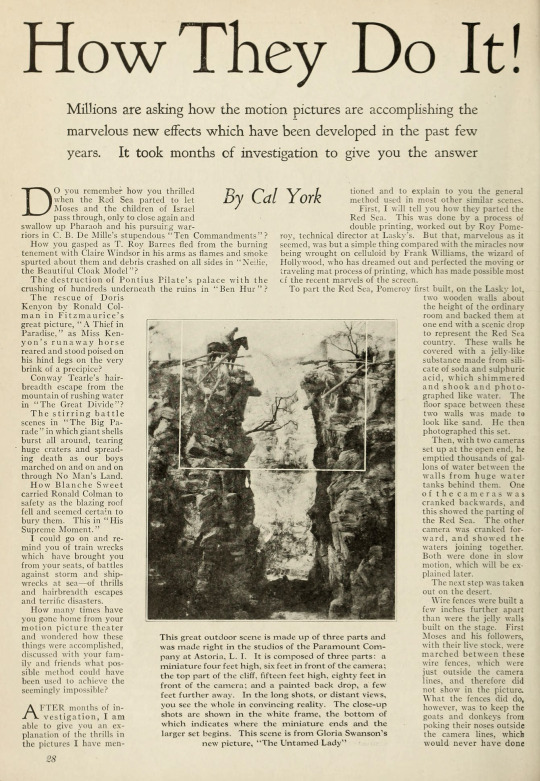
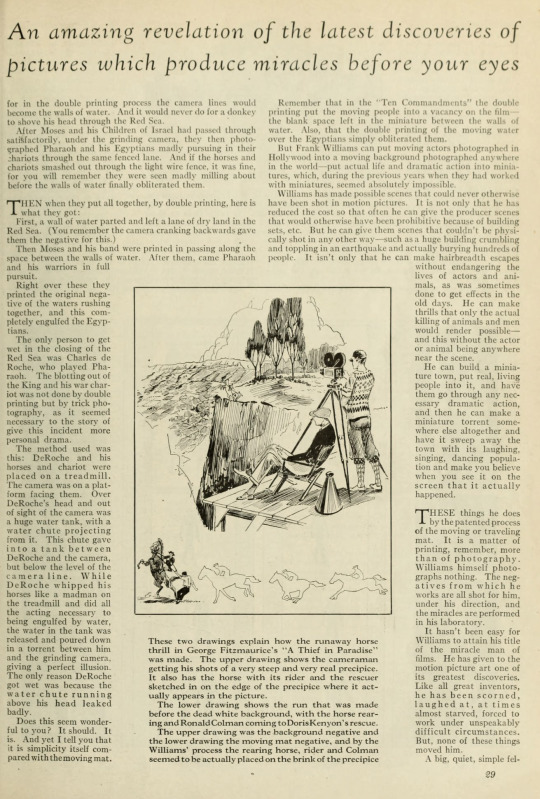
How They Do It!
[from Photoplay, April 1926]
by Cal York
Millions are asking how the motion pictures are accomplishing the marvelous new effects which have been developed in the past few years. It took months of investigation to give you the answer
DO you remember how you thrilled when the Red Sea parted to let Moses and the children of Israel pass through, only to close again and swallow up Pharaoh and his pursuing warriors in C.B. De Mille's stupendous "Ten Commandments" ?
How you gasped as T. Roy Barnes fled from the burning tenement with Claire Windsor in his arms as flames and smoke spurted about them and debris crashed on all sides in "Nellie, the Beautiful Cloak Model"?
The destruction of Pontius Pilate's palace with the crushing of hundreds underneath the ruins in "Ben Hur"?
The rescue of Doris Kenyon by Ronald Colman in Fitzmaurice's great picture, "A Thief in Paradise," as Miss Kenyon's runaway horse reared and stood poised on his hind legs on the very brink of a precipice?
Conway Tearle's hair-breadth escape from the mountain of rushing water in "The Great Divide"?
The stirring battle scenes in "The Big Parade" in which giant shells burst all around, tearing huge craters and spreading death as our boys marched on and on and on through No Man's Land.
How Blanche Sweet carried Ronald Colman to safety as the blazing roof fell and seemed certain to bury them. This in "His Supreme Moment."
I could go on and remind you of train wrecks which have brought you from your seats, of battles against storm and shipwrecks at sea—of thrills and hairbreadth escapes and terrific disasters.
How many times have you gone home from your motion picture theater and wondered how these things were accomplished, discussed with your family and friends what possible method could have been used to achieve the seemingly impossible?
AFTER months of investigation, I am able to give you an explanation of the thrills in the pictures I have mentioned and to explain to you the general method used in most other similar scenes.
First, I will tell you how they parted the Red Sea. This was done by a process of double printing, worked out by Roy Pomeroy, technical director at Lasky's. But that, marvelous as it seemed, was but a simple thing compared with the miracles now being wrought on celluloid by Frank Williams, the wizard of Hollywood, who has dreamed out and perfected the moving or traveling mat process of printing, which has made possible most of the recent marvels of the screen.
[Roy Pomeroy was head technical wizard for Famous Players-Lasky/Paramount (that is to say, he was their head special-effects engineer). We only know for certain about a handful of films that Pomeroy made specific contributions to, like The Ten Commandments (1923) and Wings (1927). As with many journeymen of the silent/studio era of Hollywood, the amount of films Pomeroy worked on was likely substantial, but many technical roles went uncredited at the time.]
To part the Red Sea, Pomeroy first built, on the Lasky lot, two wooden walls about the height of the ordinary room and backed them at one end with a scenic drop to represent the Red Sea country. These walls he covered with a jelly-like substance made from silicate of soda and sulphuric acid, which shimmered and shook and photographed like water. The floor space between these two walls was made to look like sand. He then photographed this set.

Then, with two cameras set up at the open end, he emptied thousands of gallons of water between the walls from huge water tanks behind them. One of the cameras was cranked backwards, and this showed the parting of the Red Sea. The other camera was cranked forward, and showed the waters joining together. Both were done in slow motion, which will be explained later.

The next step was taken out on the desert.
Wire fences were built a few inches further apart than were the jelly walls built on the stage. First Moses and his followers, with their live stock, were marched between these wire fences, which were just outside the camera lines, and therefore did not show in the picture. What the fences did do, however, was to keep the goats and donkeys from poking their noses outside the camera lines, which would never have done for in the double printing process the camera lines would become the walls of water. And it would never do for a donkey to shove his head through the Red Sea.
After Moses and his Children of Israel had passed through satisfactorily, under the grinding camera, they then photographed Pharaoh and his Egyptians madly pursuing in their chariots through the same fenced lane. And if the horses and chariots smashed out through the light wire fence, it was fine. for you will remember they were seen madly milling about before the walls of water finally obliterated them.
THEN when they put all together, by double printing, here is what they got:
First, a wall of water parted and left a lane of dry land in the Red Sea. (You remember the camera cranking backwards gave them the negative for this.)
Then Moses and his band were printed in passing along the space between the walls of water. After them, came Pharaoh and his warriors in full pursuit.
Right over these they printed the original negative of the waters rushing together, and this completely engulfed The Egyptians.

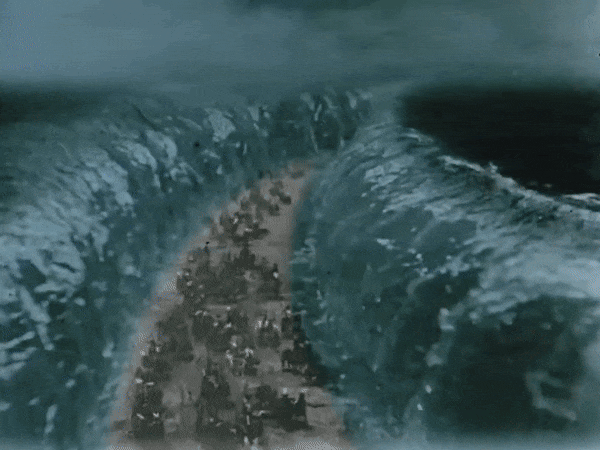
The only person to get wet in the closing of the Red Sea was Charles de Roche, who played Pharaoh. The blotting out of the King and his war chariot was not done by double printing but by trick photography, as it seemed necessary to the story of give this incident more personal drama.

The method used was this: DeRoche and his horses and chariot were placed on a treadmill. The camera was on a platform facing them. Over DeRoche's head and out of sight of the camera was a huge water tank, with a water chute projecting from it. This chute gave into a tank between DeRoche and the camera, but below the level of the camera line. While DeRoche whipped his horses like a madman on the treadmill and did all the acting necessary to being engulfed by water, the water in the tank was released and poured down in a torrent between him and the grinding camera, giving a perfect illusion. The only reason DeRoche got wet was because the water chute running above his head leaked badly.
Does this seem wonderful to you? It should. It is. And yet I tell you that it is simplicity itself compared with the moving mat.
Remember that in the "Ten Commandments" the double printing put the moving people into a vacancy on the film—the blank space left in the miniature between the walls of water. Also, that the double printing of the moving water over the Egyptians simply obliterated them.
READ ON BELOW the JUMP!
---
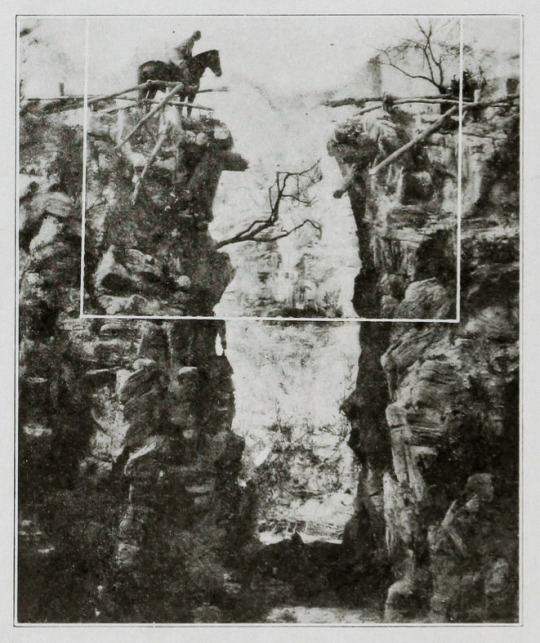
Photo caption: This great outdoor scene is made up of three parts and was made right in the studios of the Paramount Company at Astoria, L.I. It is composed of three parts: a miniature four feet high, six feet in front of the camera; the top part of the cliff, fifteen feet high, eighty feet in front of the camera; and a painted back drop, a few feet further away. In the long shots, or distant views, you see the whole in convincing reality. The close-up shots are shown in the white frame, the bottom of which indicates where the miniature ends and the larger set begins. This scene is from Gloria Swanson's new picture, "The Untamed Lady"
[The Untamed Lady (1926) is presumed lost, but luckily, a few images of this cliff-top sequence have survived.
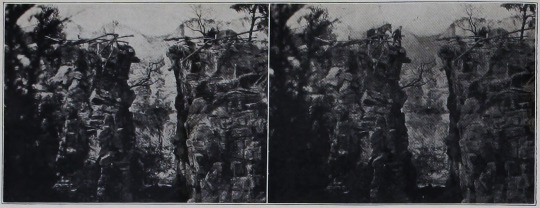

from Exhibitors Herald, 20 March 1926]
An amazing revelation of the latest discoveries of pictures which produce miracles before your eyes
---
But Frank Williams can put moving actors photographed in Hollywood into a moving background photographed anywhere in the world—put actual life and dramatic action into miniatures, which, during the previous years when they had worked with miniatures, seemed absolutely impossible.
[As you can gather from this article Frank Williams was a pioneer cinematographer and special effects artist. Williams was able to patent his moving matte process (and named it the Williams process) and it was an important effects technique used in film as as varied as Ben-Hur (1925), Sunrise: A Song of Two Humans (1926), The Lost World (1925), and The Invisible Man (1933). All of which are extant and easily accessible!
While it wasn’t in regular use for very long, the process was the basis for significant later developments in special effects photography, like green screening!]
Williams has made possible scenes that could never otherwise have been shot in motion pictures. It is not only that he has reduced the cost so that often he can give the producer scenes that would otherwise have been prohibitive because of building sets, etc. But he can give them scenes that couldn't be physically shot in any other way—such as a huge building crumbling and toppling in an earthquake and actually burying hundreds of people. It isn't only that he can make hairbreadth escapes without endangering the lives of actors and animals, as was sometimes done to get effects in the old days. He can make thrills that only the actual killing of animals and men would render possible—and this without the actor or animal being anywhere near the scene.
He can build a miniature town, put real, living people into it, and have them go through any necessary dramatic action, and then he can make a miniature torrent somewhere else altogether and have it sweep away the town with its laughing, singing, dancing population and make you believe when you see it on the screen that it actually happened.
THESE things he does by the patented process of the moving or traveling mat. It is a matter of printing, remember, more than of photography. Williams himself photographs nothing. The negatives from which he works are all shot for him, under his direction, and the miracles are performed in his laboratory.
It hasn't been easy for Williams to attain his title of the miracle man of films. He has given to the motion picture art one of its greatest discoveries. Like all great inventors, he has been scorned, laughed at, at times almost starved, forced to work under unspeakably difficult circumstances. But, none of these things moved him.
A big, quiet, simple fellow, only thirty-two years old. Shy, rather diffident of speech, he makes everything he does look easy. When he comes on a set, his quiet presence is scarcely noticed, and cameramen and technical experts go on spluttering and arguing, and when he is finally appealed to, he settles the problem so simply that everyone wonders why he didn't think of it himself.
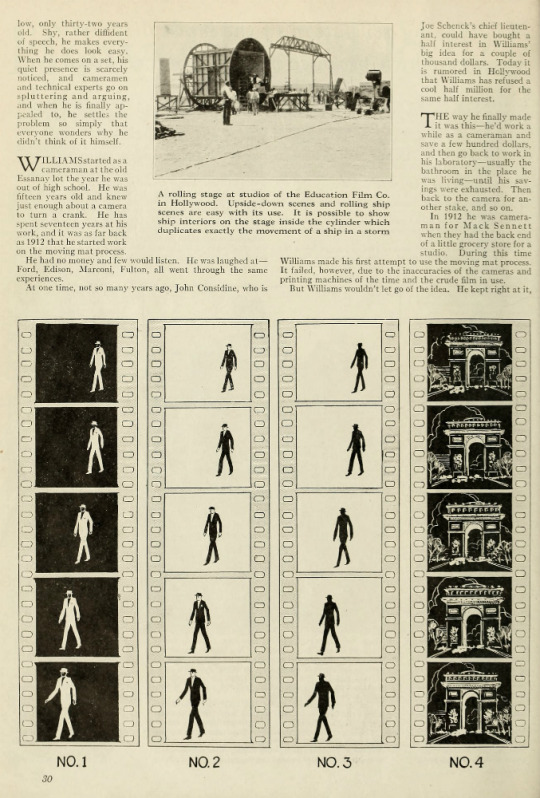
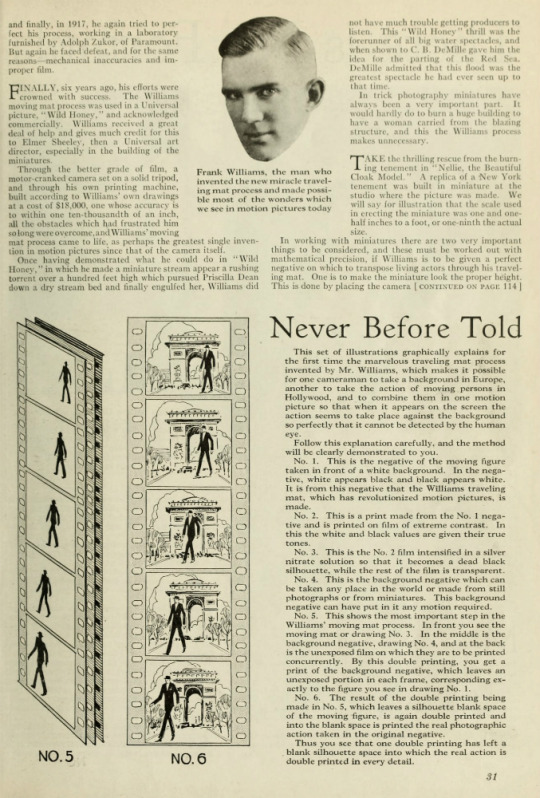
WILLIAMS started as a cameraman at the old Essanay lot the year he was out of high school. He was fifteen years old and knew just enough about a camera to turn a crank. He has spent seventeen years at his work, and it was as far back as 1912 that he started work on the moving mat process.
He had no money and few would listen. He was laughed at—Ford, Edison, Marconi, Fulton, all went through the same experiences.
At one time, not so many years ago, John Considine, who is Joe Schenck's chief lieutenant, could have bought a half interest in Williams' big idea for a couple of thousand dollars. Today it is rumored in Hollywood that Williams has refused a cool half million for the same half interest.
THE way he finally made it was this—he'd work a while as a cameraman and save a few hundred dollars, and then go back to work in his laboratory—usually the bathroom in the place he was living—until his savings were exhausted. Then back to the camera for another stake, and so on.
In 1912 he was cameraman for Mack Sennett when they had the back end of a little grocery store for a studio. During this time Williams made his first attempt to use the moving mat process. It failed, however, due to the inaccuracies of the cameras and printing machines of the time and the crude film in use.
But Williams wouldn’t let go of the idea. He kept right at it, and finally, in 1917, he again tried to perfect his process. working in a laboratory furnished by Adolph Zukor, of Paramount. But again he faced defeat, and for the same reasons—mechanical inaccuracies and improper film.
---
Photo caption: A rolling stage at studios of the Education Film Co. in Hollywood. Upside-down scenes and rolling ship scenes are easy with its use. It is possible to show ship interiors on the stage inside the cylinder which duplicates exactly the movement of a ship in a storm
[The rolling stage was used for lots of imaginative and comedic sequences in shorts and features. In the Lupino Lane short Movieland (1926), there’s a bit that shows the stage in action. Here’s a link to that specific scene, but the whole short is a lot of wacky fun and I recommend watching the full film!
Another illustration of how the rolling stage can be put to use is in When the Clouds Roll By (1919):
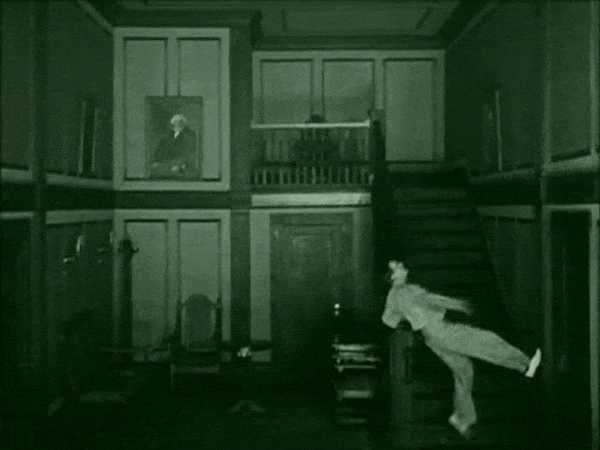

---
FINALLY, six years ago, his efforts were crowned with success. The Williams moving mat process was used in a Universal picture, "Wild Honey," and acknowledged commercially. Williams received a great deal of help and gives much credit for this to Elmer Sheeley, then a Universal art director, especially in the building of the miniatures.
Through the better grade of film, a motor-cranked camera set on a solid tripod, and through his own printing machine, built according to Williams' own drawings at a cost of $18,000, one whose accuracy is to within one ten-thousandth of an inch, all the obstacles which had frustrated him so long were overcome and Williams' moving mat process came to life, as perhaps the greatest single invention in motion pictures since that of the camera itself.
Once having demonstrated what he could do in "Wild Honey," in which he made a miniature stream appear a rushing torrent over a hundred feet high which pursued Priscilla Dean down a dry stream bed and finally engulfed her, Williams did not have much trouble getting producers to listen. This "Wild Honey" thrill was the forerunner of all big water spectacles, and when shown to C.B. DeMille gave him the idea for the parting of the Red Sea. DeMille admitted that this flood was the greatest spectacle he had ever seen up to that time.
[Unfortunately, Wild Honey (1922) is currently presumed lost and I was unable to find any depiction of Priscilla Dean fleeing from a torrent of water. As noted above however, there are quite a few extant films that also used Williams’ moving matte process.
In case you were wondering, I put $18,000 through an inflation calculator and it is equivalent to more than $315,000 in 2023 money!]
In trick photography miniatures have always been a very important part. It would hardly do to burn a huge building to have a woman carried from the blazing structure, and this the Williams process makes unnecessary.
TAKE the thrilling rescue front the burning tenement in "Nellie, the Beautiful Cloak Model." A replica of a New York tenement was built in miniature at the studio where the picture was made. We will say for illustration that the scale used in erecting the miniature was one and one-half inches to a foot, or one-ninth the actual size.
In working with miniatures there are two very important things to be considered, and these must be worked out with mathematical precision, if Williams is to be given a perfect negative on which to transpose living actors through his traveling mat. One is to make the miniature look the proper height. This is done by placing the camera the proper distance from the miniature (of course much closer than if it were a real building), and shooting from a lower level. The other is called timing. For example, if a miniature tree is to fall and the camera set-up is close enough and low enough to give the miniature the proper height when it is seen on the screen, then you must be careful of the speed with which it falls.
A little tree falls rapidly—a big tree slowly. And here is where the timing enters. Ultra speed cameras are used. The faster you crank the more pictures you get per second, and the slower the thing seems to move when you see it on the screen. You have all seen slow-motion pictures. These were made with slow-motion cameras, or what are more commonly termed ultra-speed cameras. And it is through this slow motion photography that the little tree is made to fall at the proper speed to be the big tree it represents, or the miniature stream is made to run at the proper speed for a giant river.
And so to get back to the fire which is still threatening "Our Nell." A torch is applied to the miniature tenement. At the proper count little invisible wires tied to window sashes are pulled and burning brands crash to the street below. And all the time the cameras, driven by motors at the proper speed, placed at the right distance from the conflagration and almost flat on the floor, are grinding away and recording this great fire.
[Nellie, the Beautiful Cloak Model (1924) is extant, with a print located at Gosfilmofond, but the film is not readily accessible. However, a depiction of the burning building sequence appears on an advertisement for the film:

from Film Daily, 28 February 1924]
OVER on some other part of the lot, and at any time which suits the director's convenience, T. Roy Barnes, with Miss Windsor in his arms, dashes through a black velvet door and down a street backed with more black velvet.
Two things must be remembered, however. The actors must come out of the velvet door at the right spot and at the right time or "count." This is necessary so that Williams can match up the fire negative, which is the background with action in it, with the negative of Miss Windsor and Barnes, which becomes the moving mat.
The remainder is simple, and is done by Williams and his printing process over at his laboratory.
On the screen you see Barnes dashing from a burning tenement with Miss Windsor in his arms while, in reality, neither of the actors has been close enough to a fire to singe a single eyelash.
Blanche Sweet's rescue of Colman in "The Supreme Moment" was worked out in the same manner as this, as have been most other burning building thrills in pictures made in the last few years.
[His Supreme Moment (1925) is presumed lost and unfortunately I was unable to locate a depiction of the burning building rescue mentioned here.]
Now for the destruction of Pontius Pilate's palace with the struggling mass crushed beneath, in "Ben Hur." Of course the palace was done in miniature, while the people did their acting out on the lot, where the street was built with a dead white backing. Again the timing had to correspond with that in the falling of the palace.
The throng of people was lined up and rehearsed. Two lines were drawn in the street a fixed distance apart—which represented the space where the ruins of the palace would fall, and the throng was sent dashing wildly down the street. At a fixed signal, all caught between the two marks fell flat on the ground. Those who had not reached the first line halted and registered terror. Those who had passed the second mark fled on, looking back and also registering terror. You see, those caught between the two marks were the people buried under the debris of Pilate's palace—those on either side had escaped.

Then came the trick printing with the two negatives, with considerable painting out of those who had fallen flat between the two lines, and you have the palace falling on the panic-stricken throng in the street. The accompanying drawings will help you to visualize this.
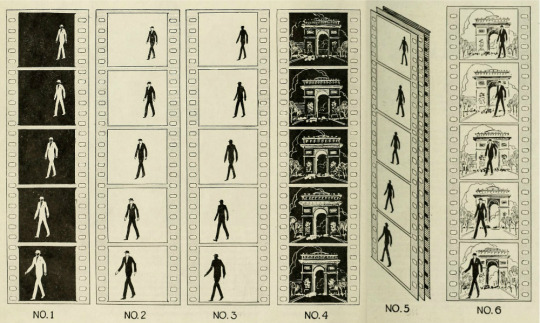
Never Before Told
This set of illustrations graphically explains for the first time the marvelous traveling mat process invented by Mr. Williams, which makes it possible for one cameraman to take a background in Europe, another to take the action of moving persons in Hollywood, and to combine them in one motion picture so that when it appears on the screen the action seems to take place against the background so perfectly that it cannot be detected by the human eye.
Follow this explanation carefully, and the method will be clearly demonstrated to you.
No. 1. This is the negative of the moving figure taken in front of a white background. In the negative, white appears black and black appears white. It is from this negative that the Williams traveling mat, which has revolutionized motion pictures, is made.
No. 2. This is a print made from the No. 1 negative and is printed on film of extreme contrast. In this the white and black values are given their true tones.
No. 3. This is the No. 2 film intensified in a silver nitrate solution so that it becomes a dead black silhouette, while the rest of the film is transparent.
No. 4. This is the background negative which can be taken any place in the world or made from still photographs or from miniatures. This background negative can have put in it any motion required.
No. 5. This shows the most important step in the Williams' moving mat process. In front you see the moving mat or drawing No. 3. In the middle is the background negative, drawing No. 4, and at the back is the unexposed film on which they are to be printed concurrently. By this double printing, you get a print of the background negative, which leaves an unexposed portion in each frame, corresponding exactly to the figure you see in drawing No. 1.
No. 6. The result of the double printing being made in No. 5, which leaves a silhouette blank space of the moving figure, is again double printed and into the blank space is printed the real photographic action taken in the original negative.
Thus you see that one double printing has left a blank silhouette space into which the real action is double printed in every detail.
---
The rescue of Doris Kenyon, which is also illustrated by the artist, was accomplished in this manner. One negative was shot of a very real and very steep precipice, the cameramen suspended on a platform far out over the edge to get the proper angle. Another negative was shot of Miss Kenyon's horse racing madly along what looked like a fence—but what was the inevitable white drop. Doris and the horse had to reach a certain mark at a certain count—for over at the precipice there had been rocks and dirt released at a certain count—the horse bad to rear, and Colman had to reach the frenzied beast, starting from outside the camera line, and he, too, must arrive on the right count. There could be no waiting for man or horse. They took it perhaps forty times before everything was exactly right, and then the two negatives (the precipice background and the moving mat) were ready for the printing wizard, and audiences got a great thrill.
[A Thief in Paradise (1925) is almost entirely lost. I profiled the film in my series Lost, but Not Forgotten in 2023.]
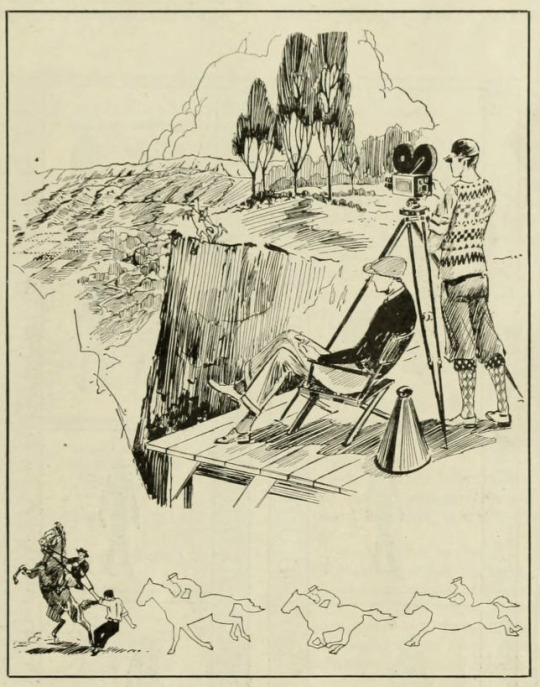
Photo caption: These two drawings explain how the runaway horse thrill in George Fitzmaurice's "A Thief in Paradise" was made. The upper drawing shows the cameraman getting his shots of a very steep and very real precipice. It also has the horse with its rider and the rescuer sketched in on the edge of the precipice where it actually appears in the picture.
The lower drawing shows the run that was made before the dead white background, with the horse rearing and Ronald Colman coming to Doris Kenyon's rescue.
The upper drawing was the background negative and the lower drawing the moving mat negative, and by the Williams' process the rearing horse, rider and Colman seemed to be actually placed on the brink of the precipice
---
You remember the mountain of water pursuing Conway Tearle in "The Great Divide." Of course they shot the torrent in miniature. Conway and his horse made their hairbreadth dash on a dark night and in an artificial rainstorm with nothing but a director threatening —then, although they did have quite a time making the steed climb a slippery and sloping wooden bridge, which was out on the back lot. Then up in Mr. Williams' laboratory, they finished one of the greatest thrills ever witnessed.
[While The Great Divide (1925) is thankfully extant at Cinemateket-Svenska Filminstitutet, it’s not easily accessible and I was unable to find a depiction of the effect.]
And the marvelous battle scenes in "The Big Parade." There were the big guns tearing huge craters in No Man's Land made on one negative, and the boys marched on and on and on in the other negative, and Mr. Williams brought them together in his printing laboratory. However, it was by no means as easy as it sounds, for this was one of the hardest pieces of moving mat printing ever accomplished.

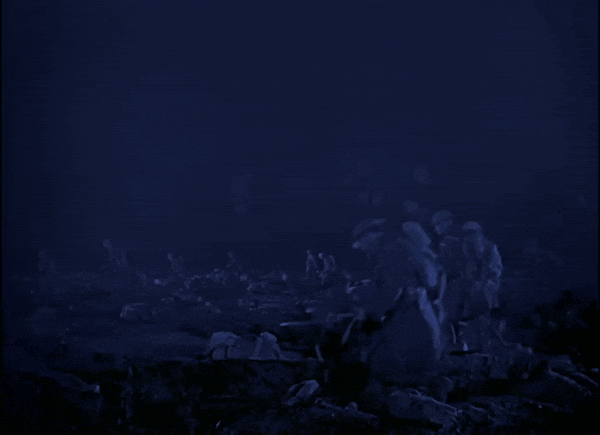

SO critical is the public that the building, photographing and printing of these miniatures must be of the very highest type of workmanship obtainable. It might be interesting to know that this work in "The Big Parade" alone cost approximately $70,000 for the background negative and the moving mat negative. The miniature battlefield was about one hundred thirty-five feet long and more than seven thousand miniature shells were fired in a period of forty seconds.
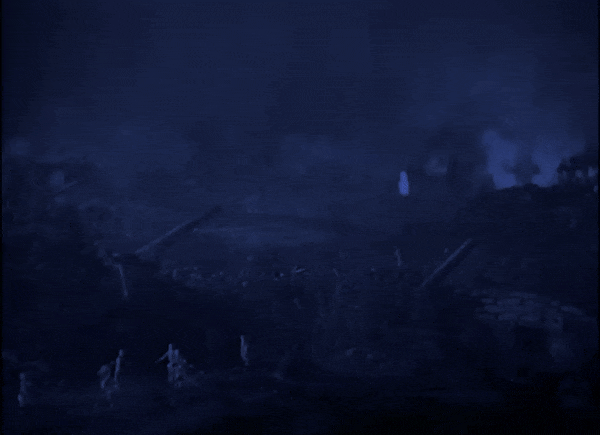



On another picture—"The Barrier"—which shows a fierce storm at sea, icebergs, and a ship caught and crushed in an ice floe, more than $85,000 have been spent to create these illusions.
[The Barrier (1926) is unfortunately presumed lost and I wasn’t able to find a depiction of this effect.]
Mr. Waller, technical camera expert of the Famous Players Long Island Studio, had never seen a cyclone; yet he was instructed to produce one for D. W. Griffith's picture, "That Royle Girl." Mr. Waller did extensive research work on the subject, and then made one to experiment with. A scientific knowledge of the working of the law of gravity, by the way, is necessary to create this phenomenon of nature.
[That Royle Girl (1925) is also presumed lost, and without film footage of this sequence there’s not really a way to know how the cyclone looked in the film. However, I do think the image highlighted in the advertisement below is likely from the cyclone sequence.
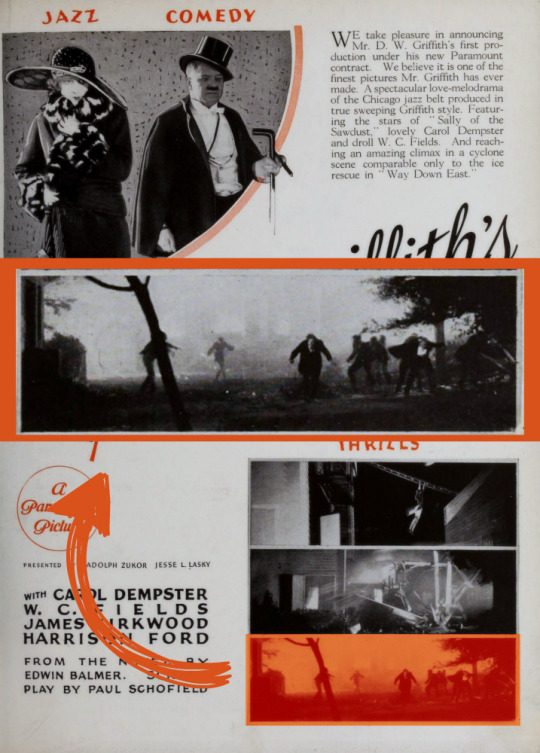
from Motion Picture News, 21 November 1925]
In the basement of the studio Mr. Waller connected up three vacuum cleaners. With three suctions of air and some dust, he made a tiny cyclone. This was photographed in slow motion so that the camera and technical crew might study the formation and activity of the cone.
From his observations of the film, Mr. Waller was able to prepare the series of wash drawings which, photographed in animated cartoon fashion, represented the action of the cyclone's cone in this sequence of the picture.
Several hundred drawings had to be made, each one depicting gradually the advance of the cone toward the Inn, which it finally demolishes. These were photographed in rotation on motion picture negative, and this negative double exposed on the 180-foot miniature scene containing the houses and trees. Thus we got a very good illusion of the cone of a cyclone advancing over a village and sweeping houses and trees out of its path.
[I wonder if/hope that some of these drawings have survived!]
The animated cartoon idea was also used in "A Kiss for Cinderella," when the pumpkin and mice change into the coach and four. The first few feet of the sequence showed real mice and pumpkin; from then on 256 wash drawings of the gradual transformation were photographed in rotation and gave the impression of being animated.
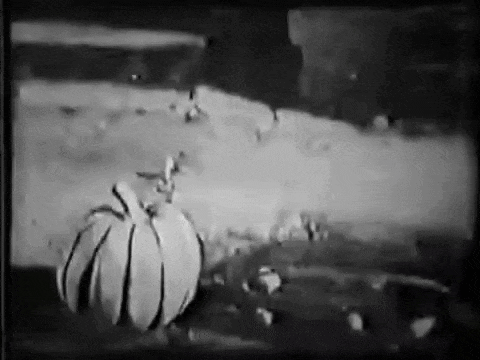
Double exposures of one actor playing two parts is the oldest and most familiar camera trick to the fans.
Just recently, however, has it been perfected to the point where the actor's two screen shadows can light each other's cigarettes and shake hands.
Tom Meighan, you recall, did this in Irish Luck."
AN invisible line from top to bottom divides each frame of the negative in half. One half at a time is exposed, photographing one half of the set.
Tom appears as Lord Fitzhugh on the left half, and as Tom Donohue on the right half. If you remember. Tom's two shadows are sitting side by side on a divan in the instance of the cigarette lighting. Fitzhugh leans over and gets a light from Donahue's cigarette. The illusion is perfect. But the cigarette from which his lordship really got the light was tacked onto a chair just outside the line, on the half of the set not being photographed at that moment. Only the lighted end of the cigarette projects into Fitzhugh's half of the picture.
[Irish Luck (1925) is extant at Eastman House, but it’s not currently easily accessible. I wasn’t able to find a depiction of this split-screen effect.]
Then when Donahue's half of the scene was being filmed, Tom leans forward and holds his cigarette in exactly the spot where the chair had been, the lighted end being outside his half of the picture. Think of the perfect matching this requires!
It is done this way. As Lord Fitzhugh performs on one side of the set, the director times his actions, counting the seconds out loud. He knows just where his lordship's right arm is, for instance, at the sixteenth second. When Donahue begins to perform on the other side of the set, his arm must be in a corresponding position at the sixteenth second. Tricky.
A thrilling moment in "Aloma of the South Seas," Gilda Grey's new picture, occurs when a shark eats a sailor. If you want this thrill, you naturally have to take it synthetic.
The shark cost $3,000. It was made of flexible rubber, and its insides consisted of a maze of electric wiring. Outside the body were several buttons which the actor could operate in his fight with the shark. It swims, wiggles its tail and bites electrically.
[Aloma of the South Seas (1926) is presumed lost and I wasn’t able to find images of the shark described here. However, as consolation, here is a photo from American Cinematographer of the film’s cinematographer Harry Fishbeck shooting on location in Puerto Rico:
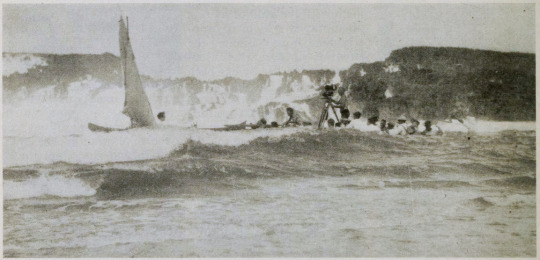
from American Cinematographer, February 1926]
I guess most of the suffering for art is done by the actors who tie themselves into knots to create the illusion of paralysis, amputated legs and so on. John Gilbert is shown in the last reels of "The Big Parade" with an amputated leg. Jack Barrymore in "The Sea Beast," also does it. It is merely a painful process of strapping the foreleg back. In "The Street of Forgotten Men," with Percy Marmont, a very lucid expose of cripple fakes is shown. Marmont had his arm strapped to his back for hours at a stretch during the filming of this picture. It hurts the first fifteen minutes, Percy said. After that the arm becomes numb.
A vigorous massage is necessary to bring it back to life, but it doesn't feel normal for weeks, Percy says.
Lon Chaney has his tricks of deformity down so pat that they are almost painless to him now.
#1920s#1910s#1926#classic film#classic movies#film#american film#my edits#silent film#my gifs#silent movies#silent era#silent cinema#cinema#film history#history#Roy Pomeroy#Frank Williams#Film Art#How'd They Do It#photoplay#lantern
60 notes
·
View notes